Forums
- Forums
- Axis And Allies Forum
- General Discussion
- Aviation News
Aviation News
Post a reply
- Go to Previous topic
- Go to Next topic
- Go to Welcome
- Go to Introduce Yourself
- Go to General Discussion
- Go to Screenshots, Images and Videos
- Go to Off topic
- Go to Works in Progress
- Go to Skinning Tips / Tutorials
- Go to Skin Requests
- Go to IJAAF Library
- Go to Luftwaffe Library
- Go to RAF Library
- Go to USAAF / USN Library
- Go to Misc Library
- Go to The Ops Room
- Go to Made in Germany
- Go to Campaigns and Missions
- Go to Works in Progress
- Go to Juri's Air-Raid Shelter
- Go to Campaigns and Missions
- Go to Works in Progress
- Go to Skinpacks
- Go to External Projects Discussion
- Go to Books & Resources
-
 Main AdminA 442nd Fighter Wing A-10 Thunderbolt II, from Whiteman Air Force Base, Mo., completes close air support training with members of the 146th Air Support Operations Squadron and Estonian tactical air control party specialists at Smoky Hill Air National Guard Range in Salina, Kan., Dec. 13, 2017. Members of the 146 ASOS, in Oklahoma City, organized the training between the 442 FW and Estonia TACP. (U.S. Air National Guard photo by Staff Sgt. Tyler Woodward)
Main AdminA 442nd Fighter Wing A-10 Thunderbolt II, from Whiteman Air Force Base, Mo., completes close air support training with members of the 146th Air Support Operations Squadron and Estonian tactical air control party specialists at Smoky Hill Air National Guard Range in Salina, Kan., Dec. 13, 2017. Members of the 146 ASOS, in Oklahoma City, organized the training between the 442 FW and Estonia TACP. (U.S. Air National Guard photo by Staff Sgt. Tyler Woodward)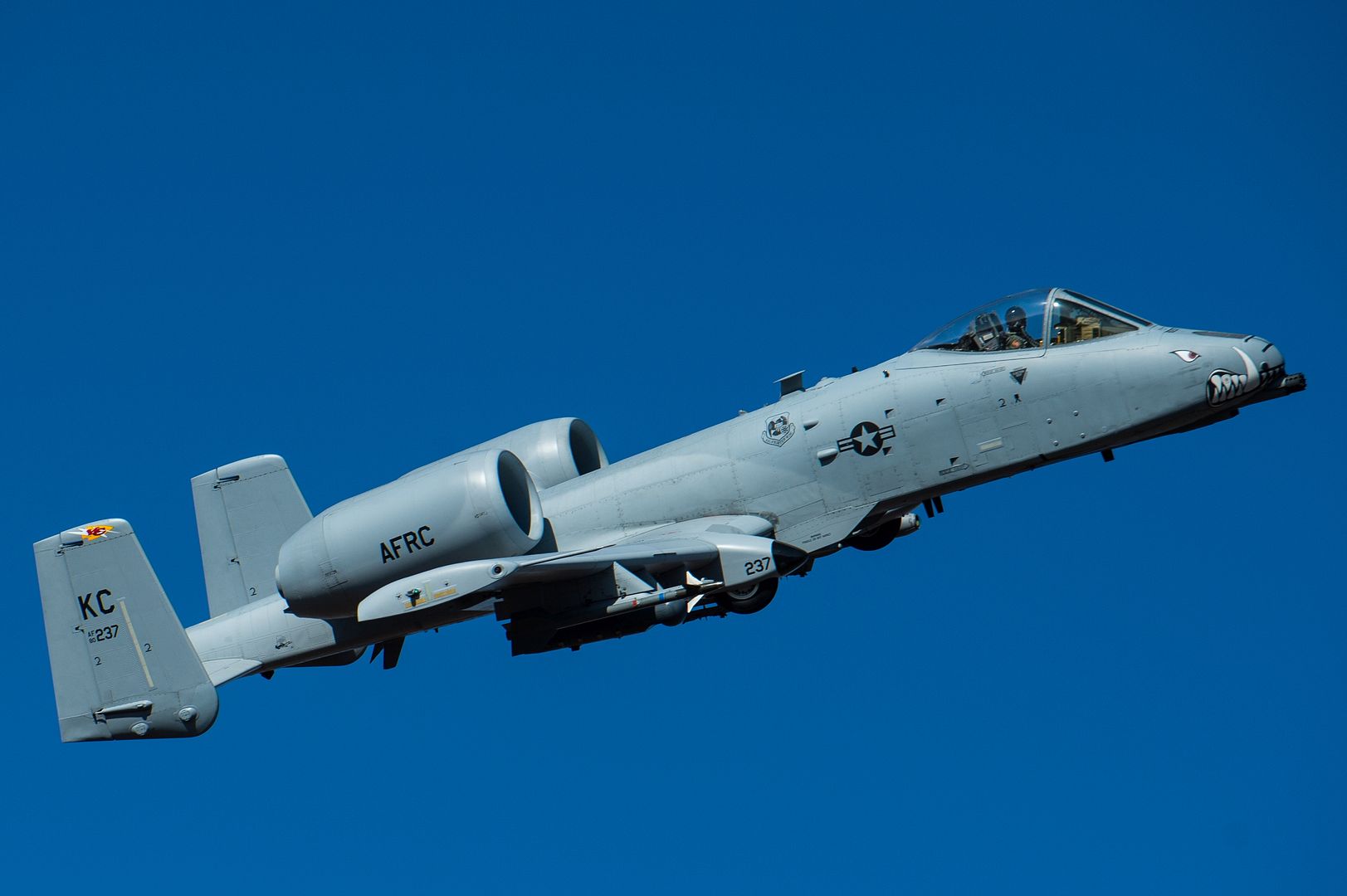
A Polish F-16 Fighting Falcon departs to continue a mission after receiving fuel from a KC-135 Stratotanker assigned to the 447th Air Expeditionary Group over Syria, Dec. 1, 2017. The Polish Air Force is a military branch of the Polish Armed Forces, as of 2014 it consisted of around 16,425 military personnel and around 475 aircraft distributed among 10 bases throughout Poland. (U.S. Air Force photo by Staff Sgt. Paul Labbe)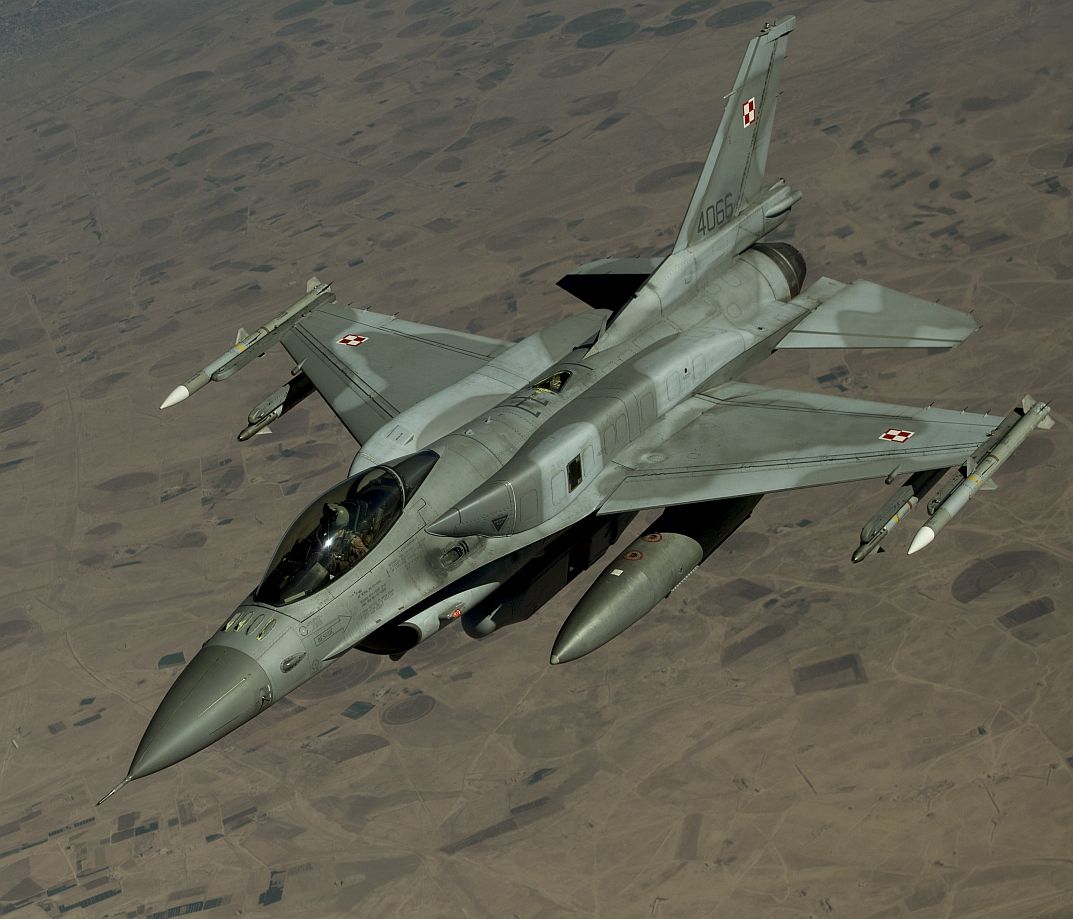
A U.S. Air Force F-22 Raptor departs to continue a mission after receiving fuel from a KC-135 Stratotanker assigned to the 447th Air Expeditionary Group over Syria, Dec. 1, 2017. The F-22 Raptor with a combination of sensor capabilities, integrated avionics, situational awareness, and weapons superiority secure the airspace during operations in countries such as Iraq, Syria and Afghanistan. (U.S. Air Force photo by Staff Sgt. Paul Labbe)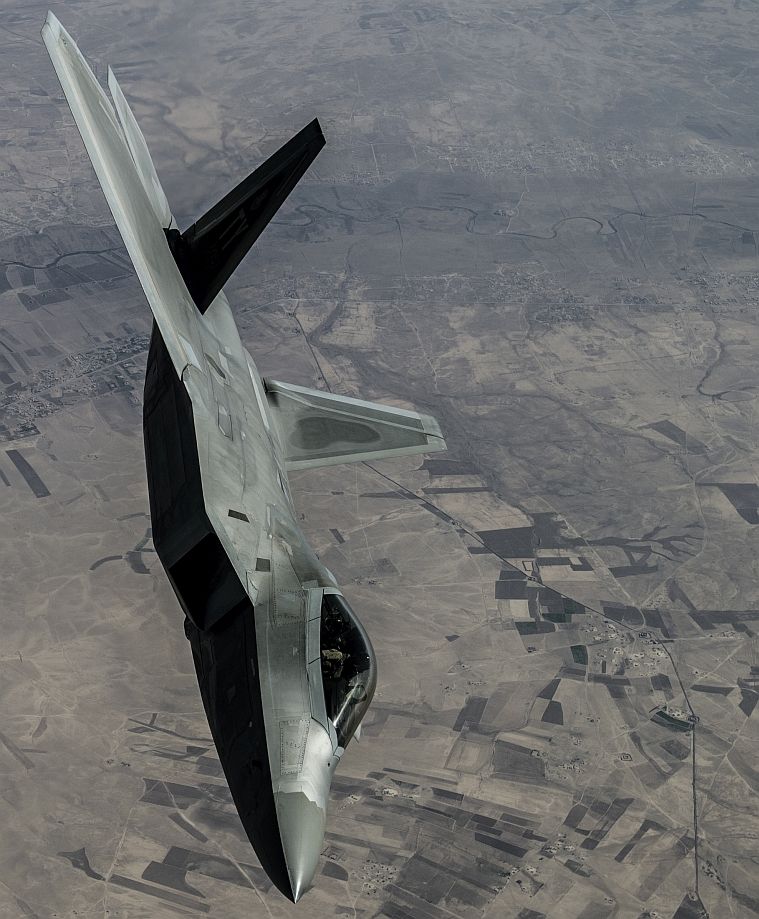
A U.S. Air Force A-10 Thunderbolt II departs to continue a mission after receiving fuel from a KC-135 Stratotanker assigned to the 447th Air Expeditionary Group over Syria Dec. 1, 2017. The Thunderbolt IIs have been involved in fighting from Mosul to Raqqa and are currently used in the fight against ISIS in countries such as Iraq, Syria and Afghanistan. (U.S. Air Force photo by Staff Sgt. Paul Labbe)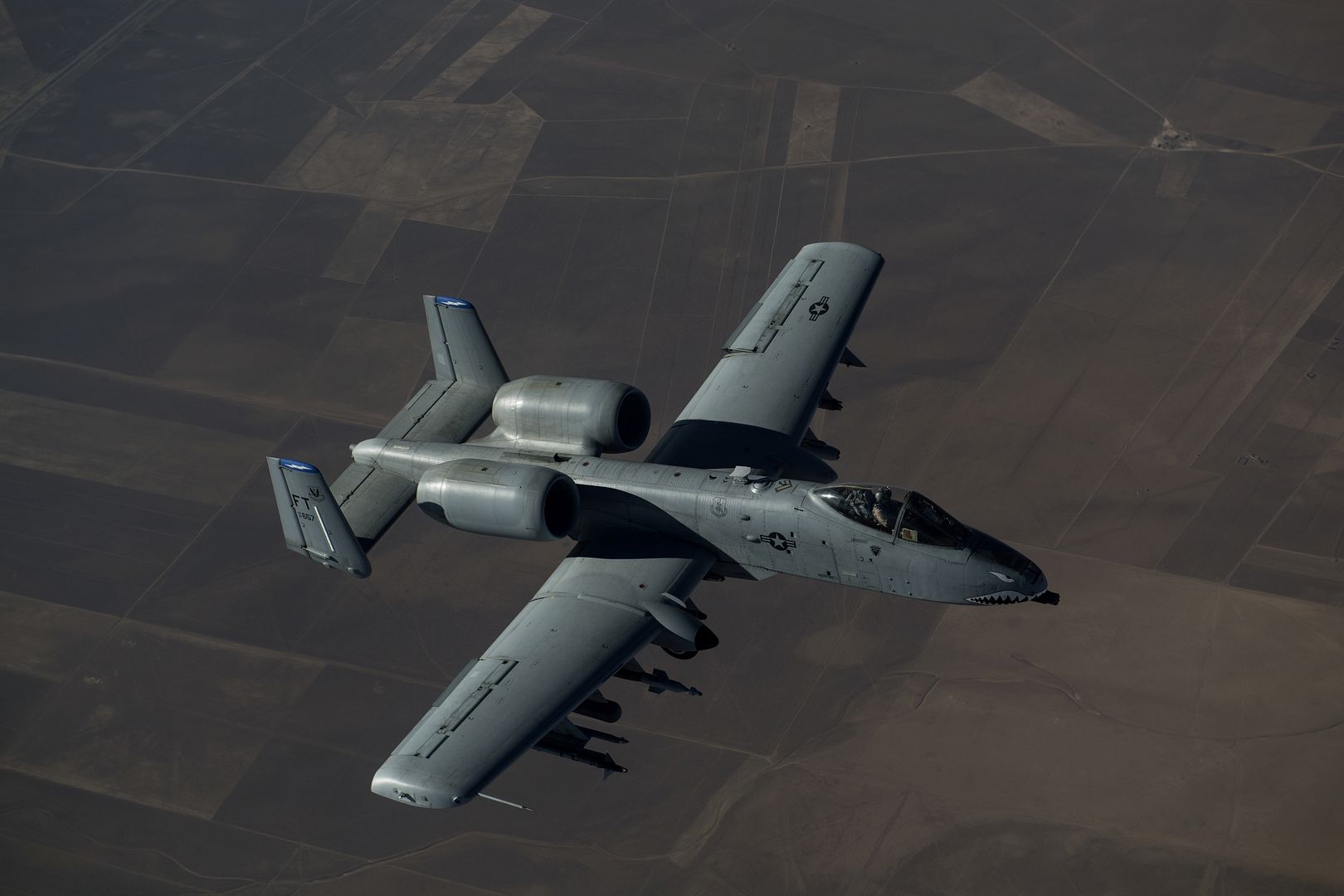
An F-16 Fighting Falcon assigned to the 310th Fighter Squadron sits on the flight line at Luke Air Force Base, Ariz., Dec. 12, 2017. The 310th FS graduated their latest F-16 Basic Course class Dec. 13, and retired Air Force pilot Lt. Col. Bob Pardo spoke at the ceremony and addressed the graduates. (U.S. Air Force photo/Senior Airman Ridge Shan)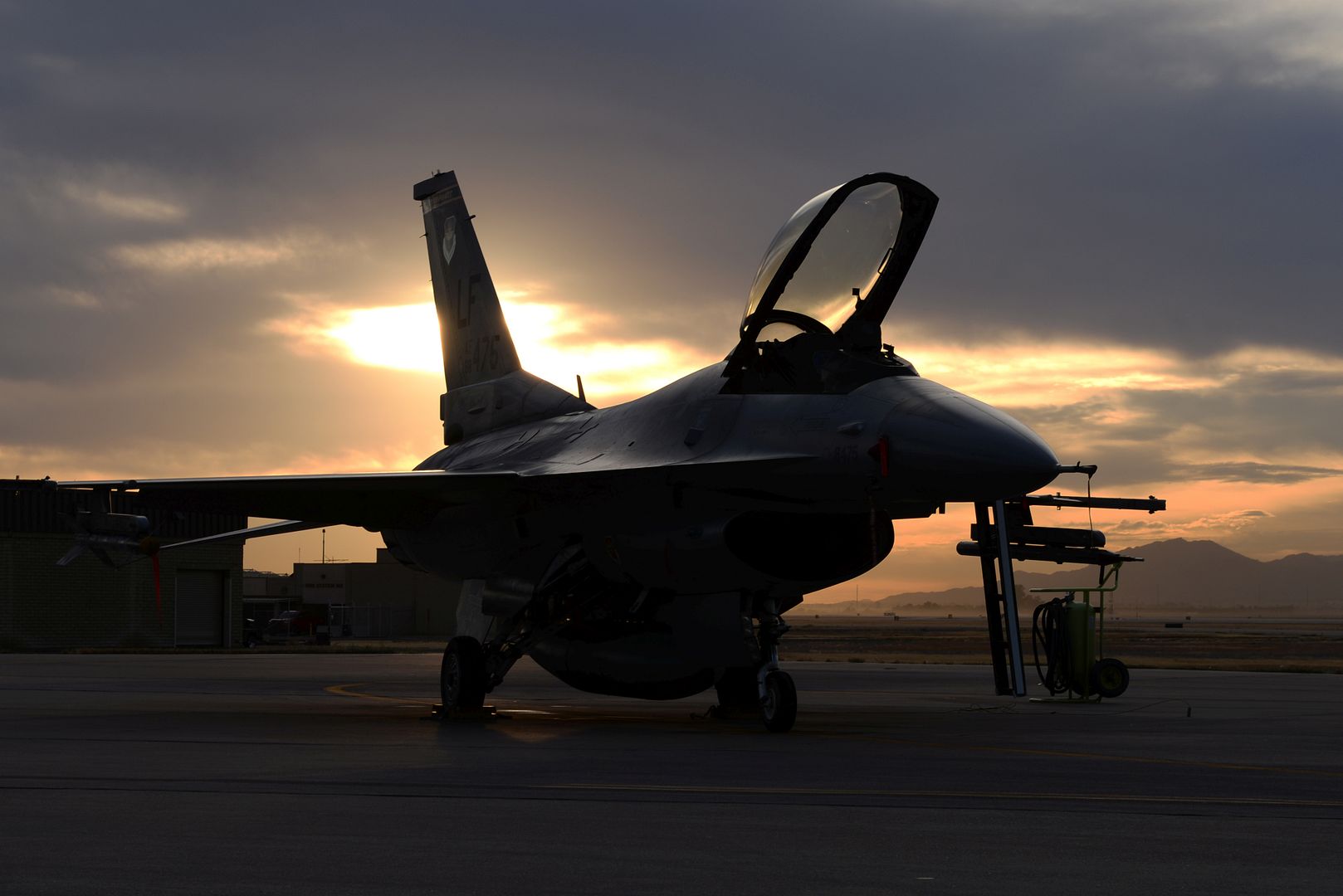
ARABIAN GULF (Dec. 14, 2017) An F/A-18F Super Hornet, assigned to the Fighting Redcocks of Strike Fighter Attack Squadron (VFA) 22, takes off from the flight deck of the aircraft carrier USS Theodore Roosevelt (CVN 71) during a replenishment-at-sea with the dry cargo and ammunition ship USNS Matthew Perry (T-AKE 9). Theodore Roosevelt and its carrier strike group are deployed to the U.S. 5th Fleet area of operations in support of maritime security operations to reassure allies and partners and preserve the freedom of navigation and the free flow of commerce in the region. (U.S. Navy photo's by Mass Communication Specialist 3rd Class Spencer Roberts/Released)
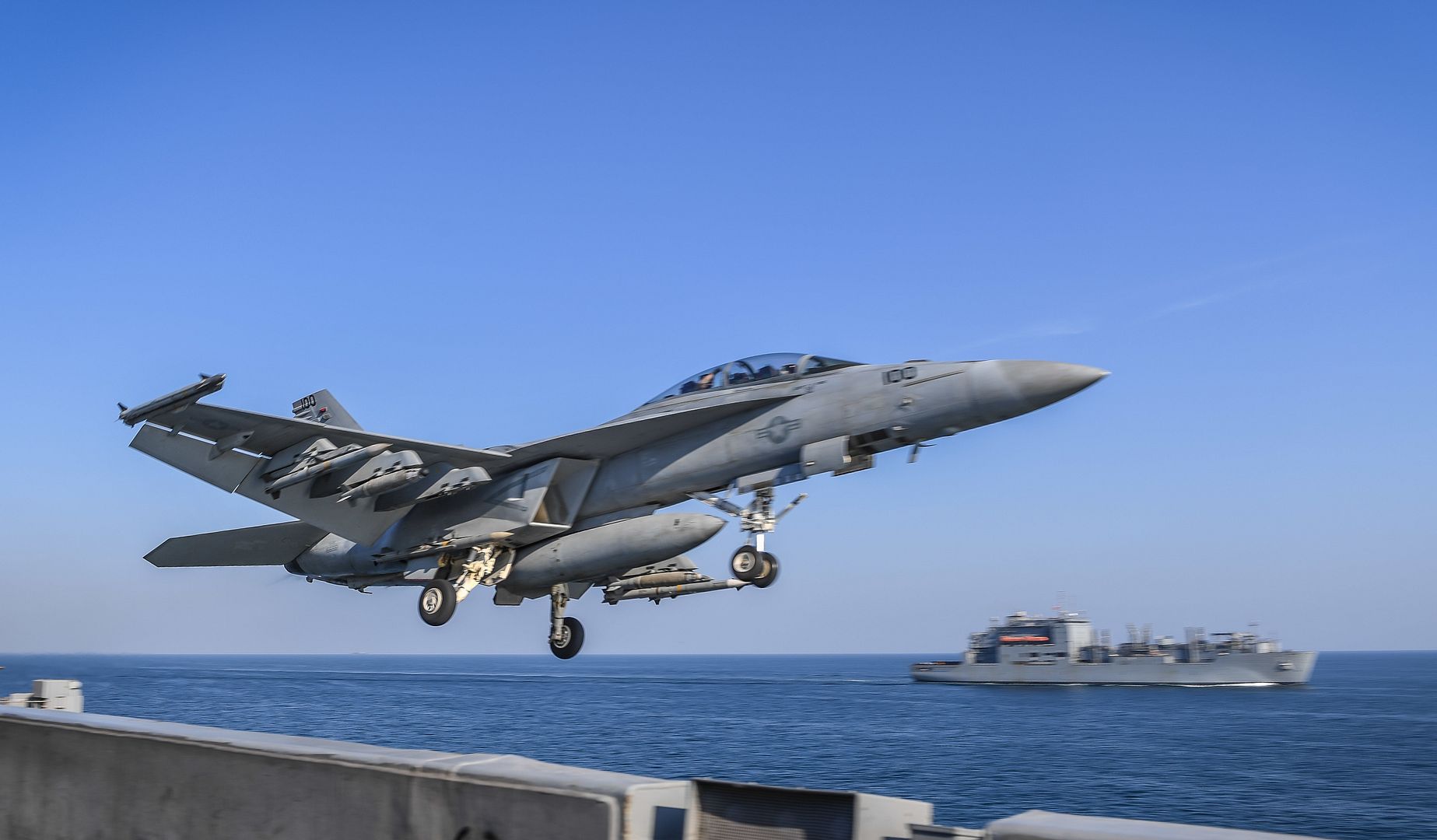
Air Commandos with the 7th Special Operations Squadron, 352d Special Operations Wing perform tilt-rotor air to air refueling (TAAR) between a CV-22 Osprey and a MC-130J Commando II during an Ability to Survive and Operate (ATSO) exercise in which airmen practiced emergency response procedures for chemical warfare 13 Dec., 2017, RAF Mildenhall.
Photo's by Staff Sgt. Philip Steiner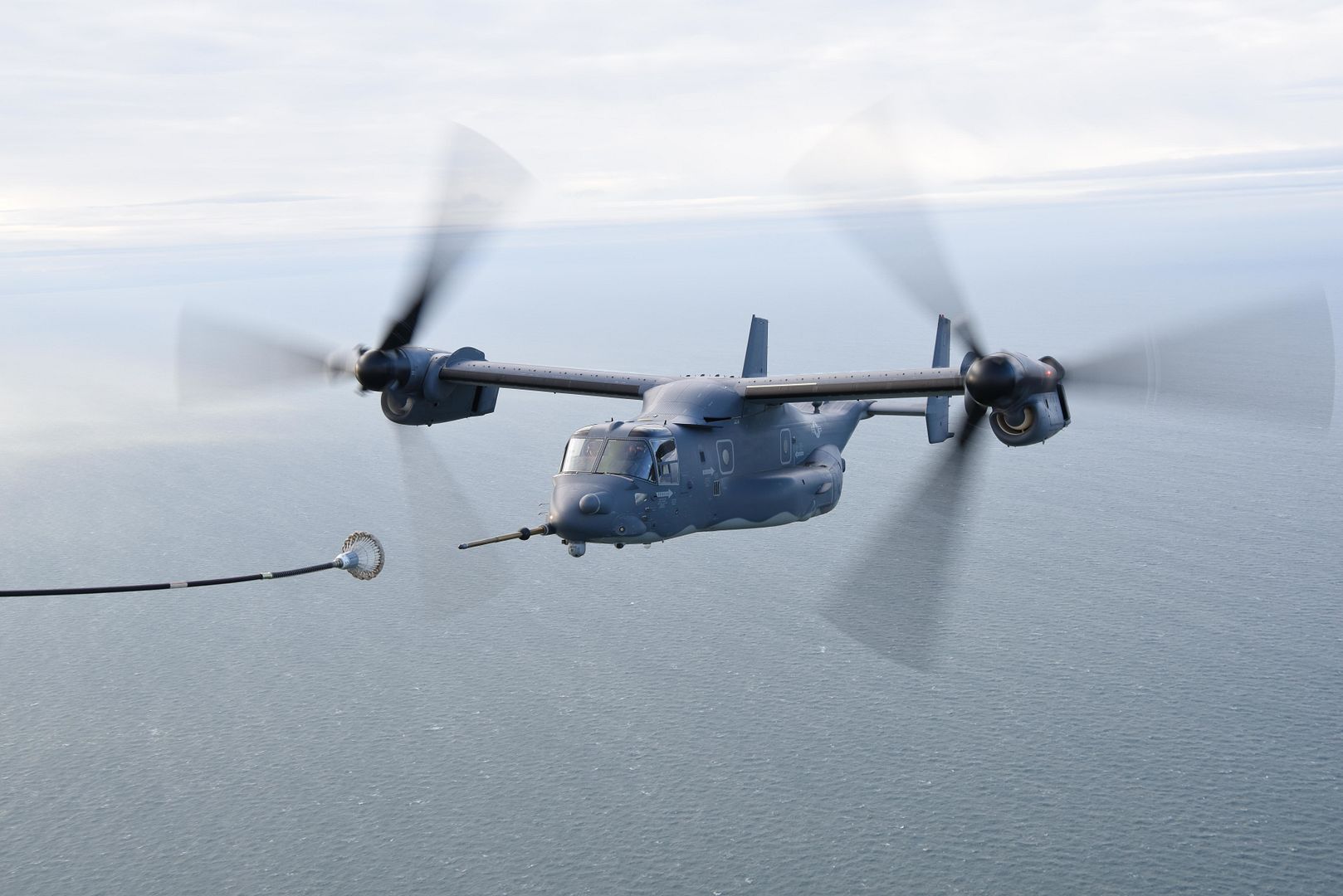
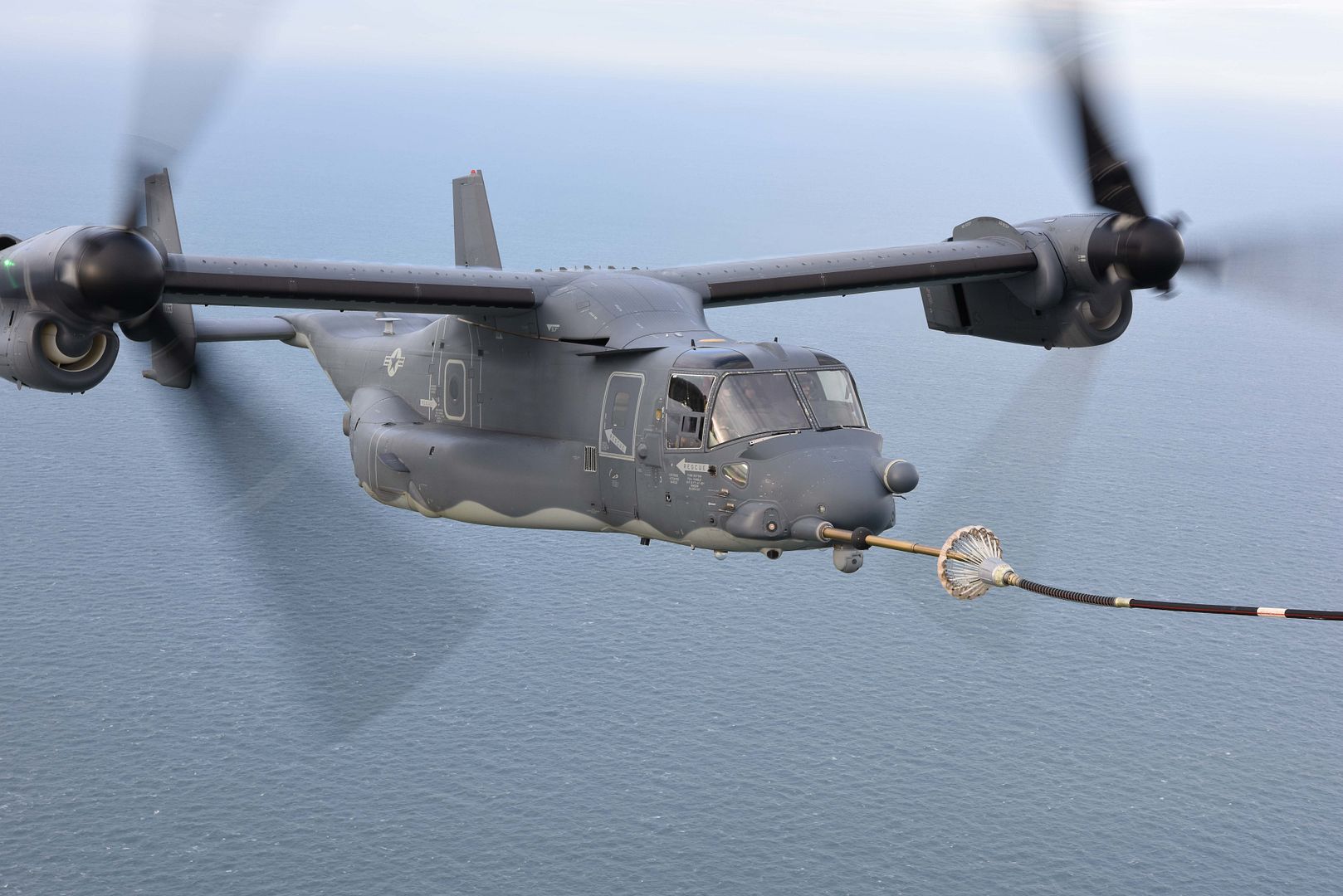
WASHINGTON, Dec. 15, 2017 /PRNewswire/ -- Two leaders in supersonic technology, Aerion and Lockheed Martin (NYSE: LMT) announced a Memorandum of Understanding (MOU) today to define a formal and gated process to explore the feasibility of a joint development of the world's first supersonic business jet, the Aerion AS2. Over the next 12 months, the companies will work together to develop a framework on all phases of the program, including engineering, certification and production.
Aerion Chairman Robert M. Bass stated, "This relationship is absolutely key to creating a supersonic renaissance. When it comes to supersonic know-how, Lockheed Martin's capabilities are well known, and, in fact, legendary. We share with Lockheed Martin a commitment to the long-term development of efficient civil supersonic aircraft."
"We are excited to work with Aerion on their development of the next-generation, efficient supersonic jet that will potentially serve as a platform for pioneering future supersonic aircraft," said Orlando Carvalho, Executive Vice President, Lockheed Martin Aeronautics.
The MOU is the result of extensive discussions between Aerion and Lockheed Martin's Skunk Works? Advanced Development Programs team. For close to 75 years, Skunk Works has existed to create revolutionary aircraft that push the boundaries of what is possible.
Lockheed Martin, known for developing the world's leading supersonic combat aircraft, the F-16, the F-35, and F-22, as well as the Mach 3+ SR-71 reconnaissance aircraft, is committed to fostering new innovations and developing supersonic technologies with civil and commercial applications.
"Following our initial review of Aerion's aerodynamic technology, our conclusion is that the Aerion AS2 concept warrants the further investment of our time and resources," said Carvalho. "We are committed to remaining on the cutting edge of aerospace technology and are excited to examine the contribution we might make to working with Aerion on making aviation history."
During the last two and a half years, Aerion advanced the aerodynamics and structural design of the AS2 through a previous engineering collaboration agreement with Airbus. Through that effort, the two companies developed a preliminary design of wing and airframe structures, systems layout, and preliminary concepts for a fly-by-wire flight control system.
"We are grateful for Airbus' contribution to the program," said Brian Barents, Aerion Executive Chairman. "We could not have moved the program to this stage without their support."
In May 2017, GE Aviation announced an agreement with Aerion to define a supersonic engine for the AS2. The latest announcement with Lockheed Martin further positions Aerion as the leader in the nascent sector of civil supersonic aviation.
About Aerion Corporation
Aerion Corporation of Reno, Nevada, was formed in 2003 to introduce a new era of practical and efficient supersonic flight. Over more than a decade, Aerion has developed and demonstrated advanced wing technology in conjunction with NASA and other leading aeronautical institutions. This research includes breakthrough work in supersonic natural laminar flow, the key enabling technology behind the AS2 business jet.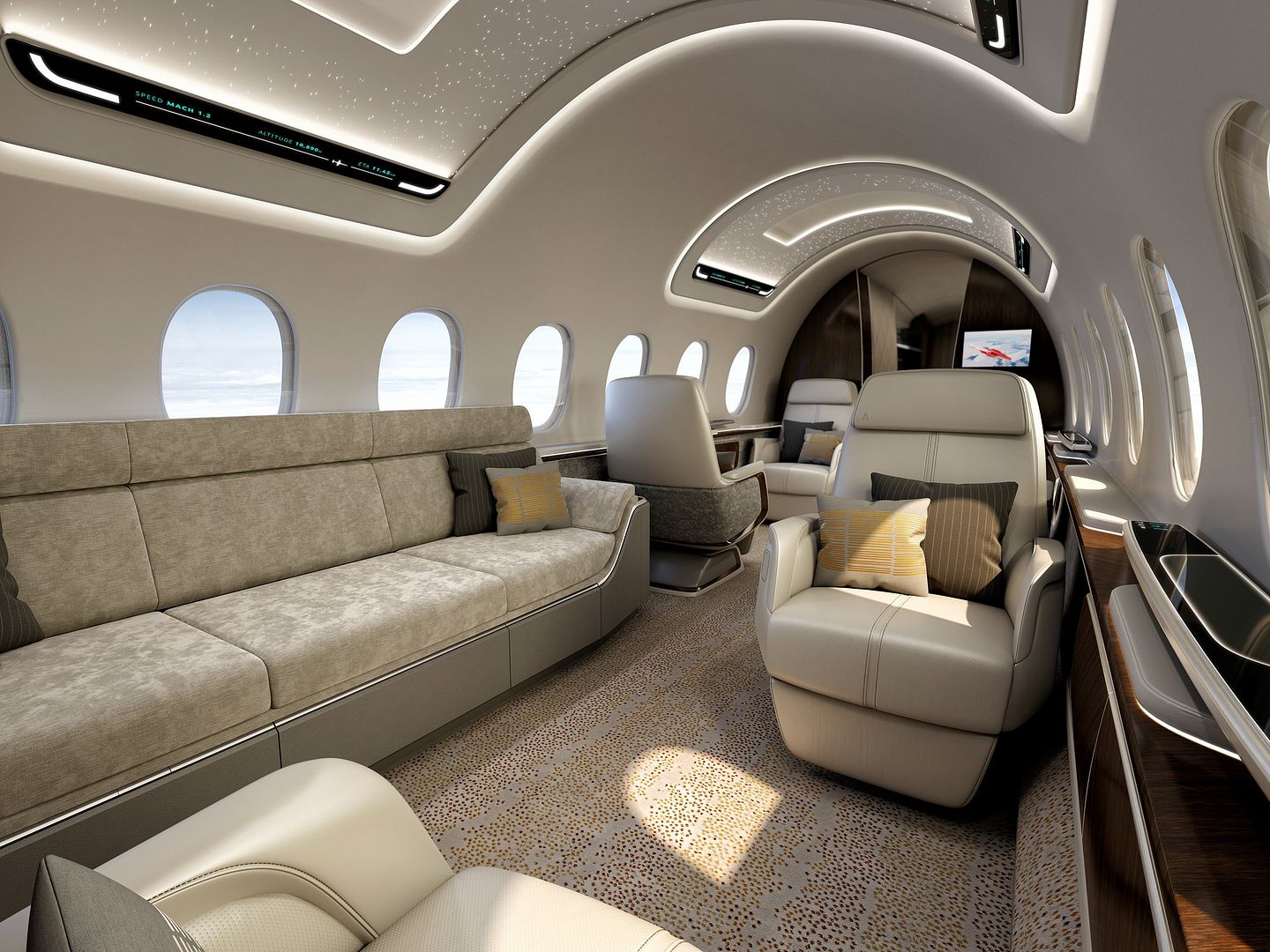
The 12-passenger AS2 is expected to fly at a maximum speed of Mach 1.4 over water, and, where permitted by regulation, at speeds approaching Mach 1.2 without a sonic boom reaching the ground. Thanks to its unique supersonic natural laminar flow wing, the aircraft is expected to achieve long range (LA to Paris) and efficiency at supersonic and subsonic speeds. Once fielded, it will reduce trans-Atlantic trips by as much as three hours, enabling business leaders to fly roundtrip between New York and London in a day.
In November 2015, Aerion announced a fleet order from fractional aircraft fleet operator Flexjet for 20 AS2 aircraft. Aerion expects the AS2's first flight in 2023 and certification in 2025.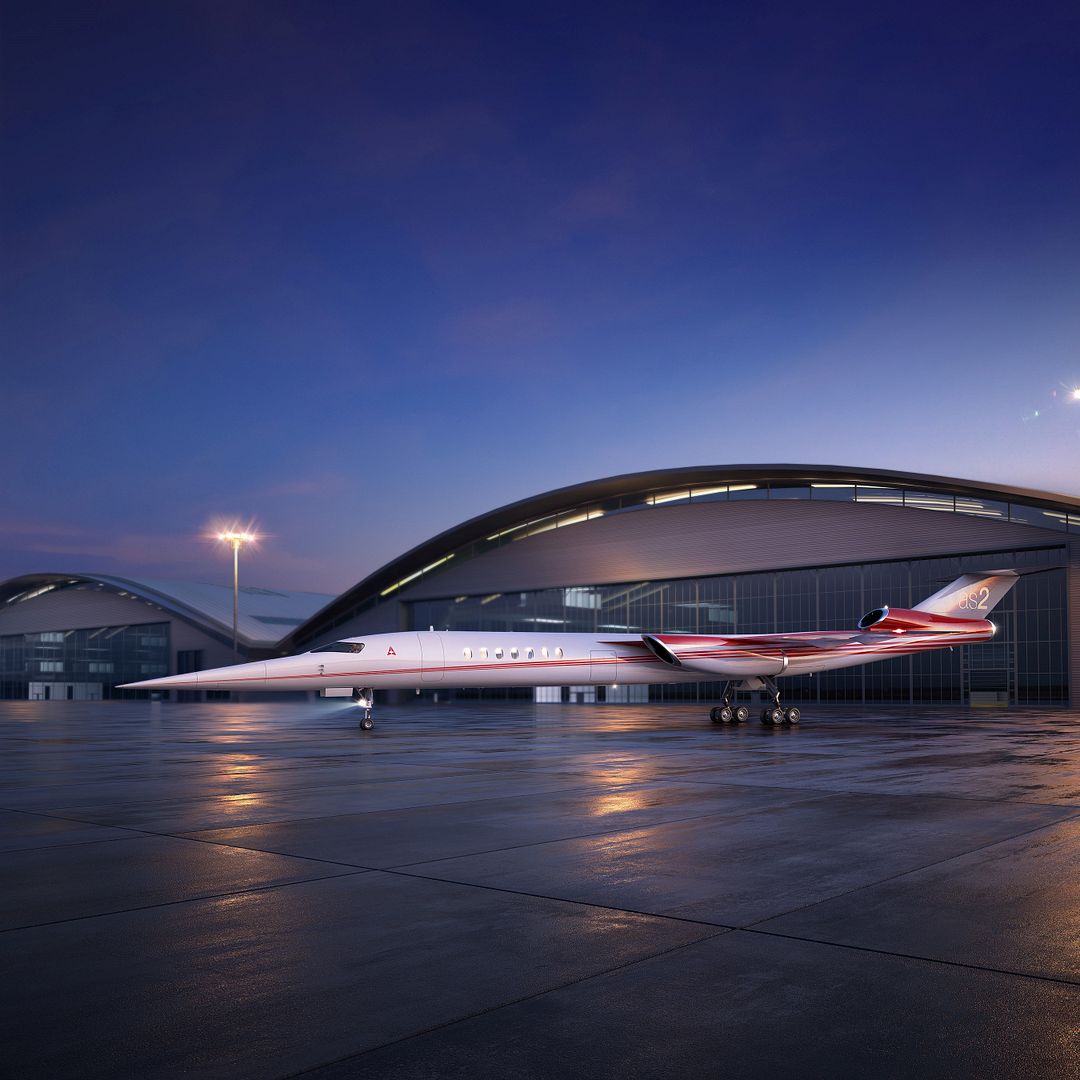
Azores Airlines has taken delivery of its first Airbus A321neo aircraft. The airline, fully owned by SATA (Sociedade A?oreana de Transportes A?reos) becomes the first Portuguese operator to receive a member of the best-selling A320neo Family. The aircraft, on lease from Air Lease Corporation (ALC), was delivered during a ceremony held at the Airbus Hamburg site.
This aircraft is the first of six A321neos to be leased by Azores Airlines from ALC. The carrier will deploy the aircraft on transatlantic routes.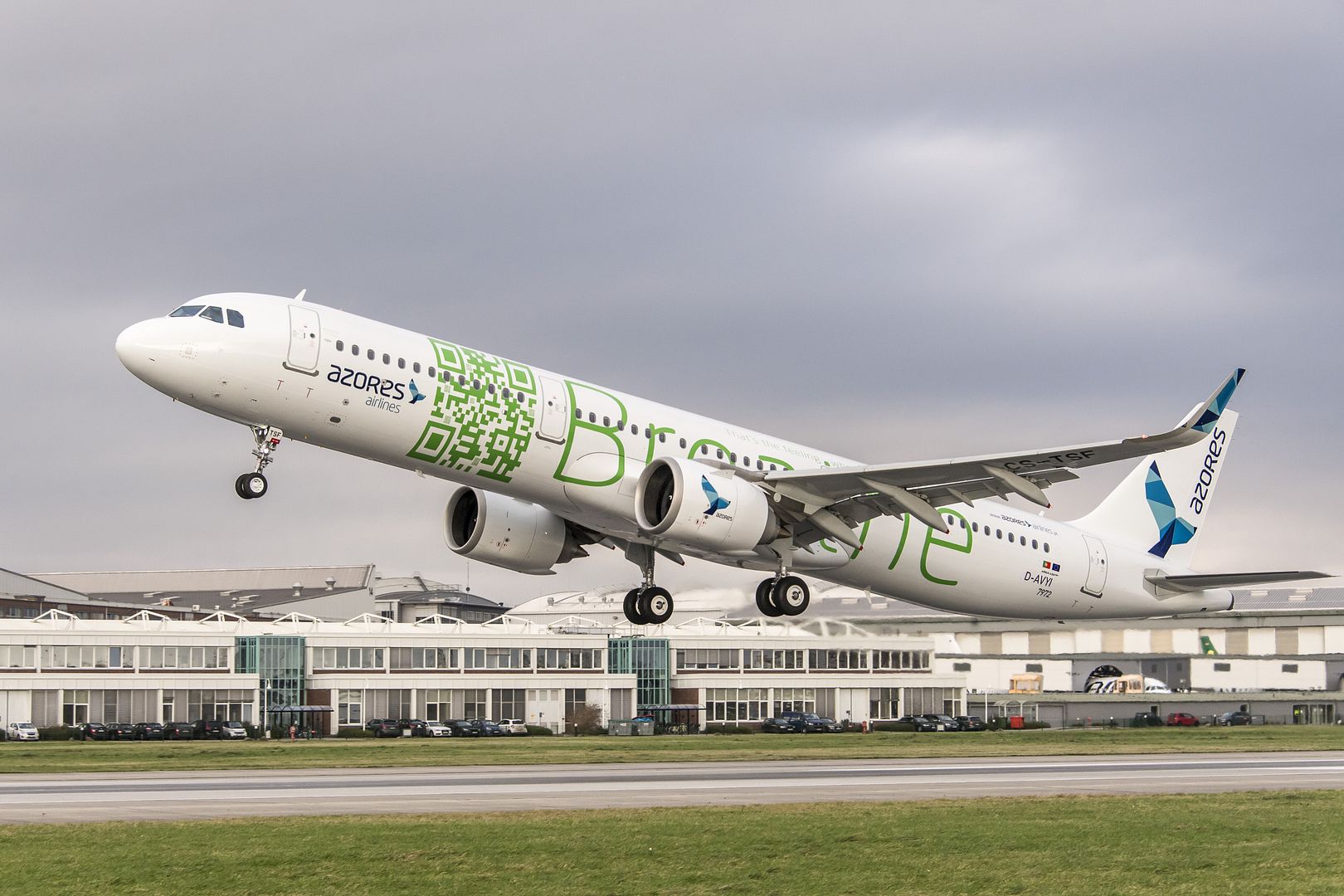
Azores Airlines currently operates a fleet of seven A310, A320 and A330 Airbus aircraft across Europe, Canada and North America.
The A321neo is the largest member of the A320neo Family and can seat up to 240 passengers. With the widest single-aisle cabin on the market, all members of the A320neo Family offer unmatched comfort in all classes. The A321neo integrates many innovations such as latest generation engines, Sharklet wingtip devices and cabin improvements, which together will deliver up to 20 percent fuel savings by 2020.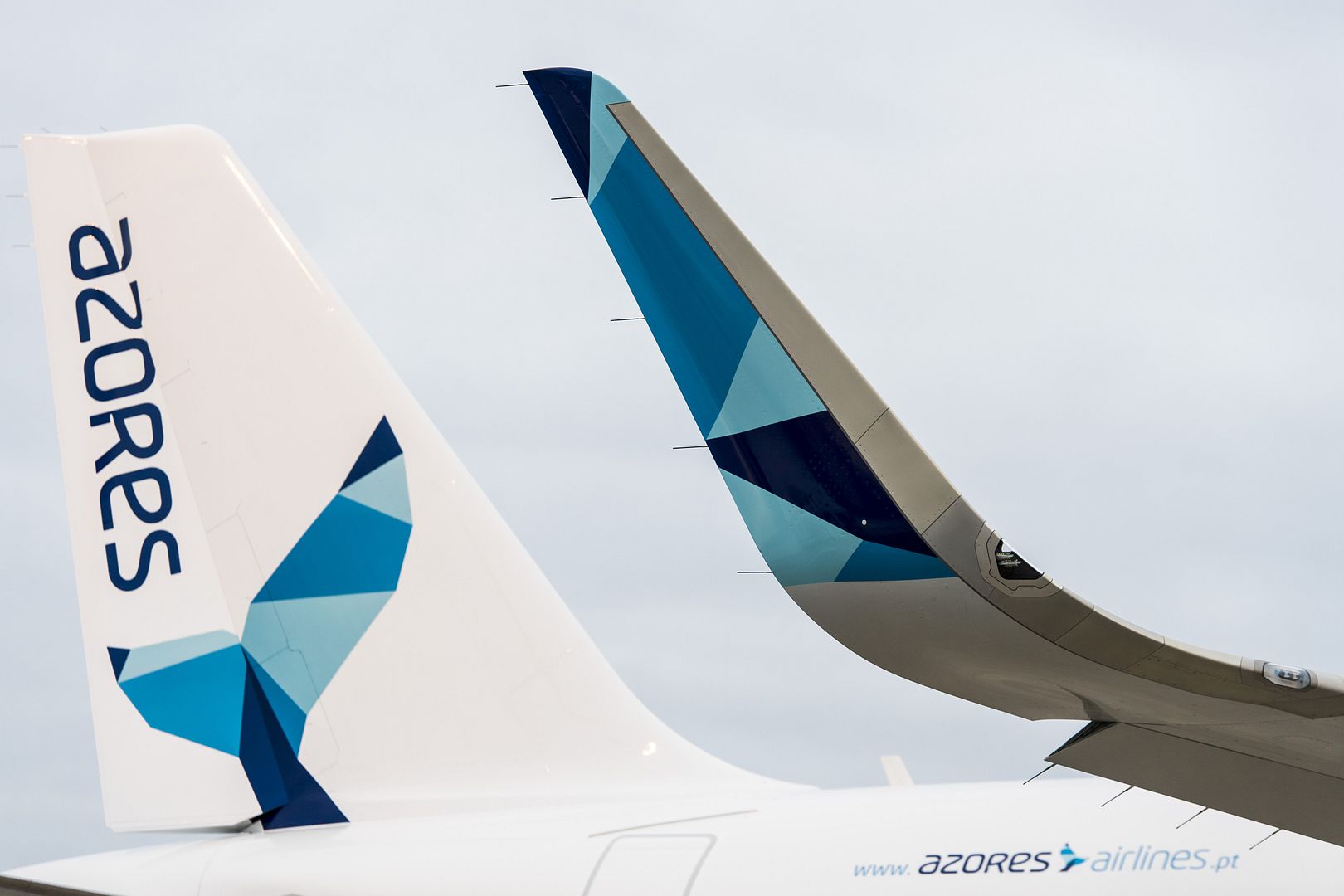
The Swiss Air Force has completed a successful four-week exercise of fast jet flying at RAF Lossiemouth, and such was its success that it is hoped it will become a regular training opportunity.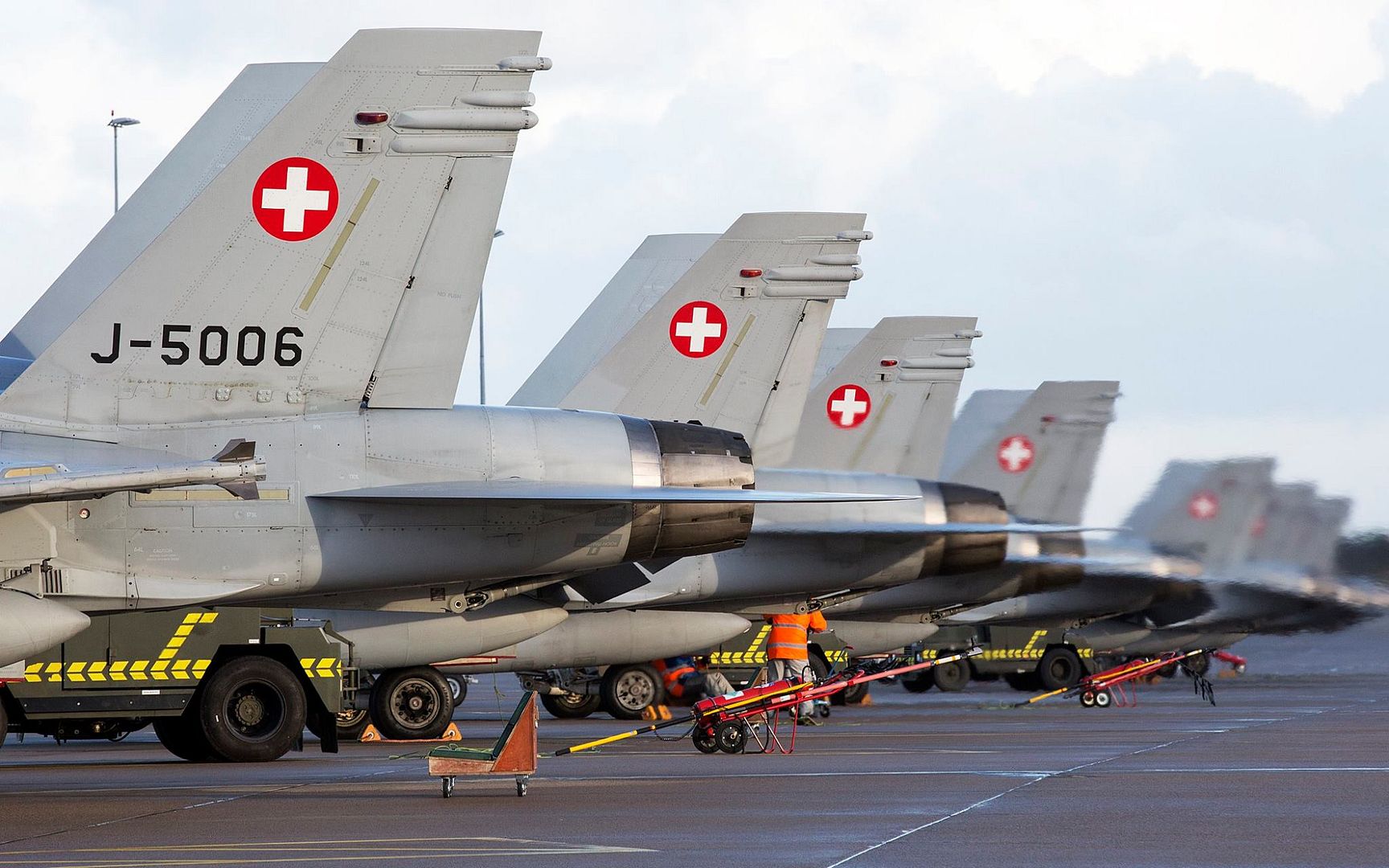
Exercise ?Scotnight? saw the Swiss Air Force bring 10 F-18 aircraft and 70 personnel to Scotland for an exercise of this type for the first time. One of the main purposes of the exercise was to enable night flying training, something that can be an issue in Switzerland due to the country?s size and geography.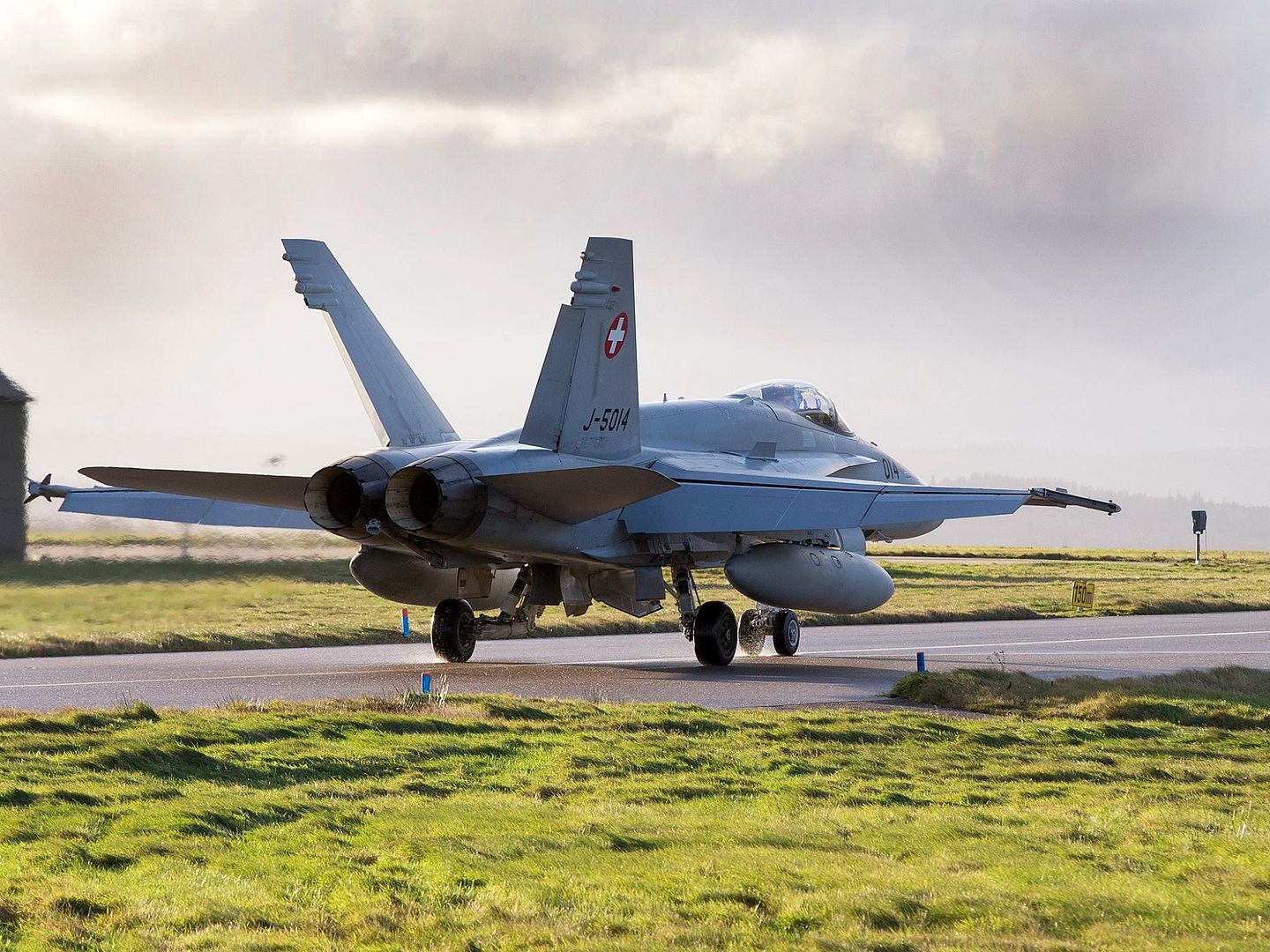
-
 Main AdminAn F-15E Strike Eagle taxis during exercise Razor Talon Dec. 15, 2017, at Seymour Johnson Air Force Base, North Carolina. Razor Talon is a low-cost, large-force training exercise for joint East Coast tactical and support aviation units. (U.S. Air Force photo by Airman 1st Class Victoria Boyton)
Main AdminAn F-15E Strike Eagle taxis during exercise Razor Talon Dec. 15, 2017, at Seymour Johnson Air Force Base, North Carolina. Razor Talon is a low-cost, large-force training exercise for joint East Coast tactical and support aviation units. (U.S. Air Force photo by Airman 1st Class Victoria Boyton)
ARABIAN GULF (Dec. 17, 2017) An F/A-18F Super Hornet, assigned to the Fighting Redcocks of Strike Fighter Squadron (VFA) 22, makes a final approach to the aircraft carrier USS Theodore Roosevelt (CVN 71). Theodore Roosevelt and its carrier strike group are deployed to the U.S. 5th Fleet area of operations in support of maritime security operations to reassure allies and partners and preserve the freedom of navigation and the free flow of commerce in the region. (U.S. Navy photo by Mass Communication Specialist 3rd Class Alex Perlman/Released)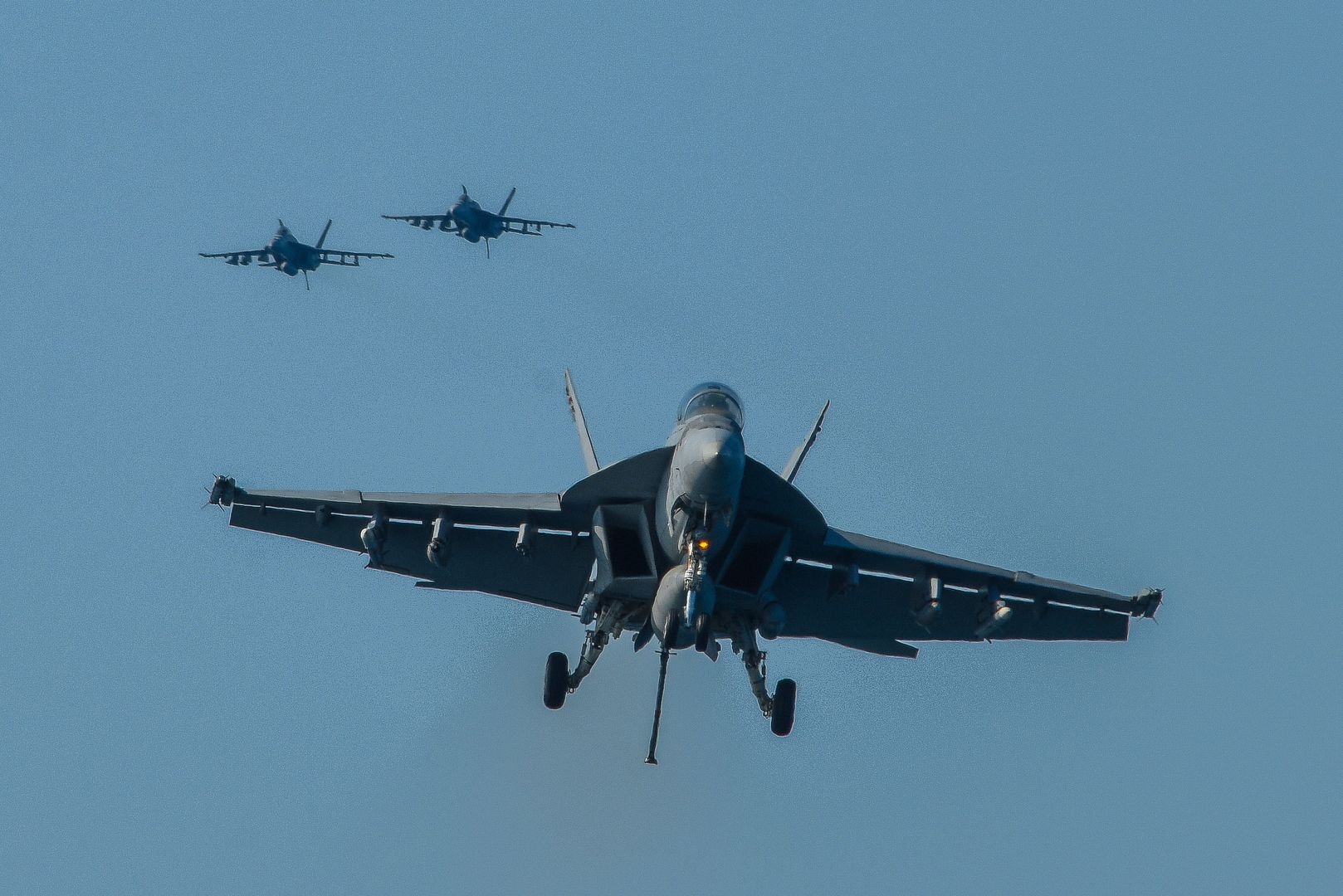
Lightning strikes near the aircraft carrier USS Theodore Roosevelt (CVN 71) as it transits the Arabian Gulf, Dec. 16, 2017. The Theodore Roosevelt and its carrier strike group are deployed to the U.S. 5th Fleet area of operations in support of maritime security operations to reassure allies and partners and preserve the freedom of navigation and the free flow of commerce in the region. (U.S. Marine Corps photo by 1st Lt. Mark Vetere)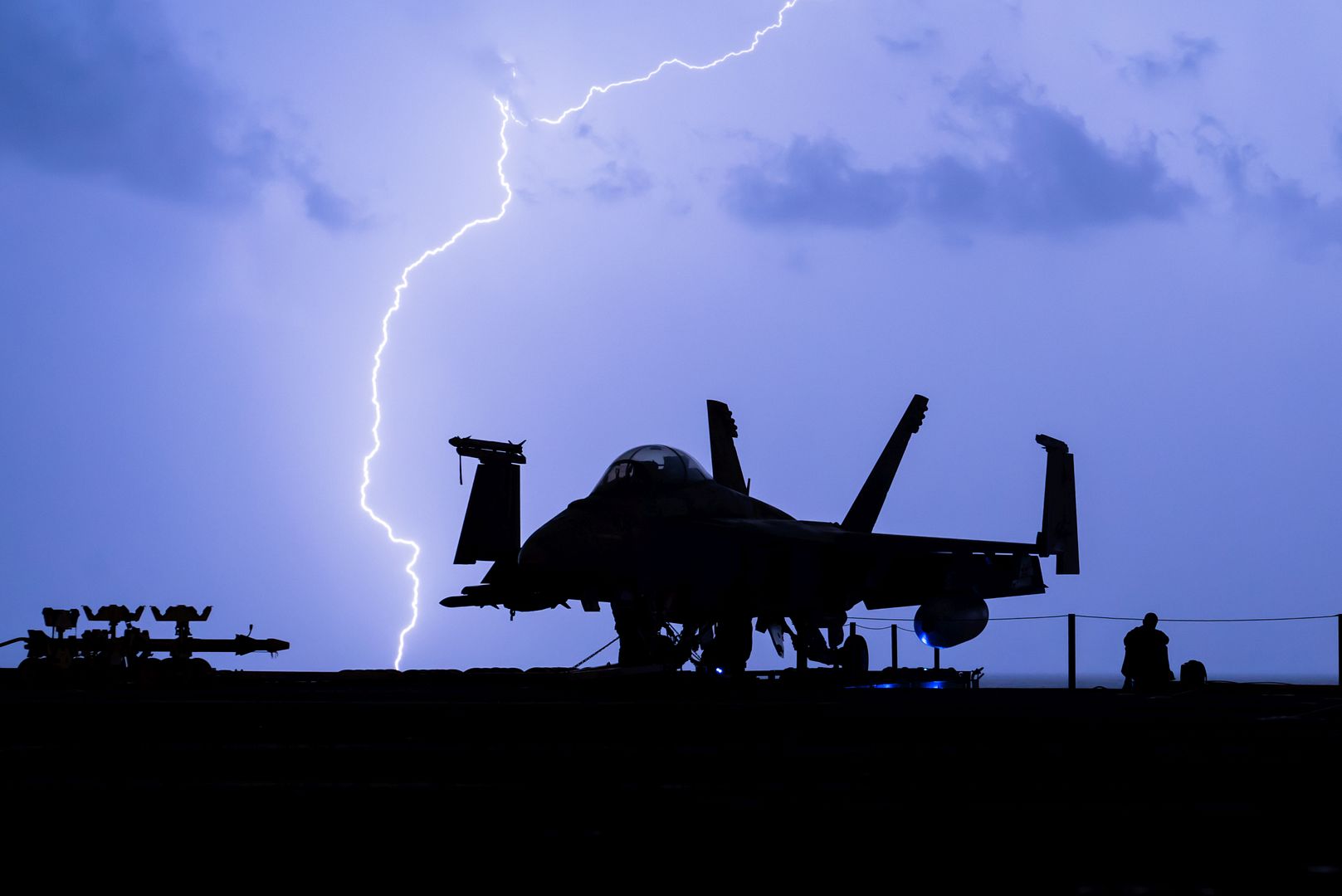
EVERETT, Wash., Dec. 15, 2017 /PRNewswire/ -- Boeing (NYSE: BA) and leasing company Avation PLC celebrated the delivery of Avation's first Boeing airplane, a 777-300ER (Extended Range), that will be leased and operated by Philippine Airlines.
This airplane is the 10th 777-300ER for Philippines' national carrier.
"The Boeing aircraft will serve our long-haul operations, a move designed to primarily enhance the total passenger travel experience and in-flight service delivery," said Jaime Bautista, PAL president and Chief Operating Officer. "While we already have eight 777s serving the West Coast, the incoming units will also augment other trans-pacific flights." Bautista added that "the Boeing 777 is our flagship for long-haul operations. With its range and operational capability, the flag carrier will be at par with other full service carriers along the route."
"We're pleased our first twin-aisle delivery is a Boeing 777, the marquee airplane in its class," said Jeff Chatfield, executive chairman, Avation. "We're confident this airplane will complement our regional and single-aisle fleet and help Avation continue to grow as a full-service commercial aircraft lessor."
Philippine Airlines took delivery of its ninth 777-300ER earlier in the week and will use the new airplanes primarily on routes from Manila to North America. The carrier will fly the 777-300ER directly from Everett, Wash. to Vancouver, British Columbia where the airplanes will enter revenue service to Manila.
"Boeing and Philippine Airlines have been strong partners for decades and it is a special occasion today as we deliver their 10th 777-300ER," said Dinesh Keskar, senior vice president, Asia Pacific & India Sales, Boeing Commercial Airplanes. "The 777 continues to outperform by all measures, providing exceptional value to our airline and leasing customers. There is no better testament to this than Philippine Airlines' confidence in its new 777-300 by putting it directly into service with its flight from Vancouver to Manila."
The 777 is the world's most successful twin-engine, long-haul airplane. The 777-300ER is equipped with the world's most powerful GE90-115B commercial jet engine, and can seat up to 386 passengers in a three-class configuration with a maximum range of 7,825 nautical miles (14,490 kilometers).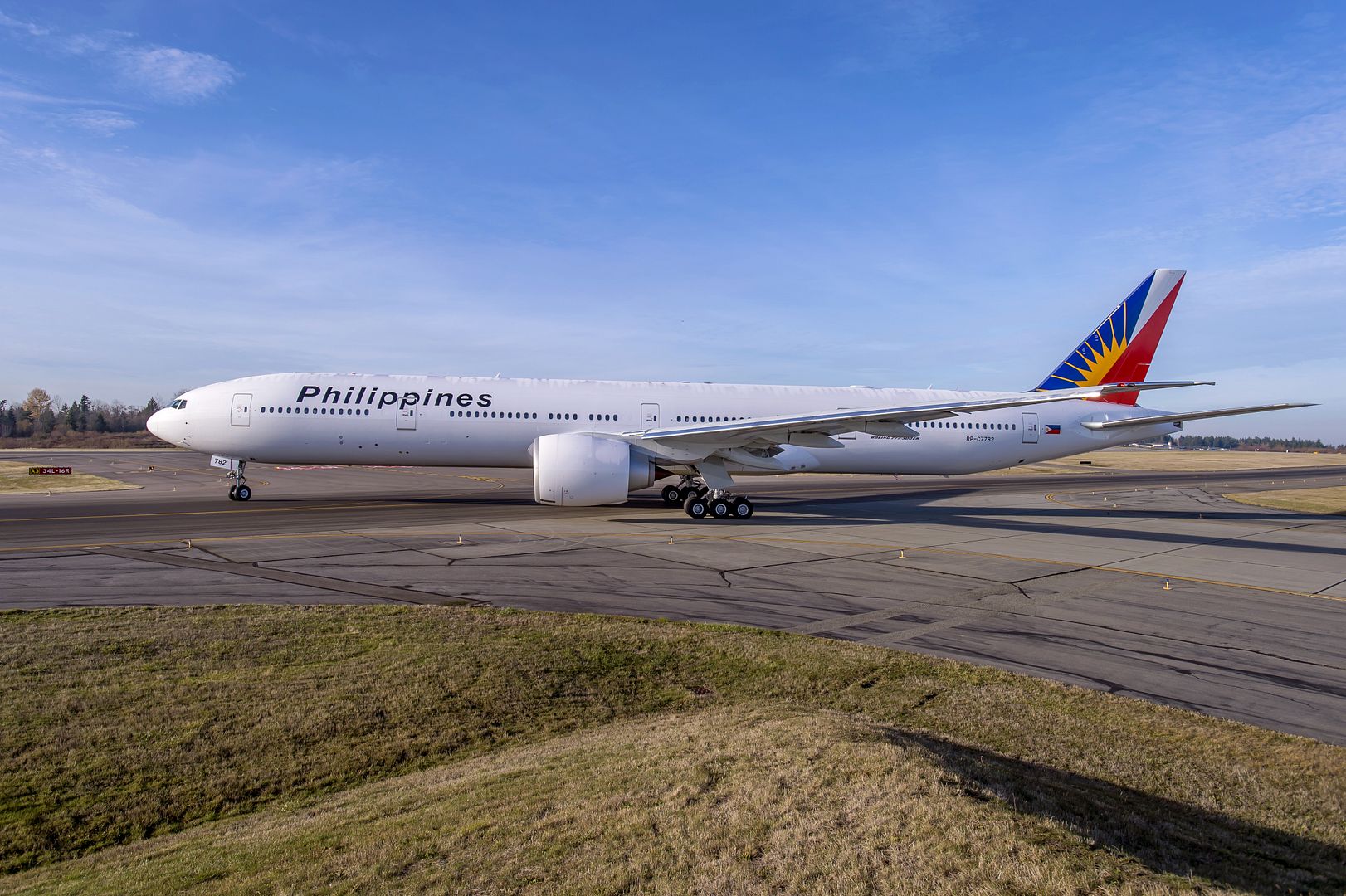
About Avation
Avation PLC is a commercial passenger aircraft leasing company, based in the United Kingdom, owning and managing a fleet of jet and turboprop aircraft which it leases to airlines across the world. The Company's customers include Philippine Airlines as well as Air France, Air India, Condor, Flybe, Fiji Airways, Thomas Cook, Virgin Australia, Mandarin Airlines and Vietjet Air. More information on Avation is available at www.avation.net.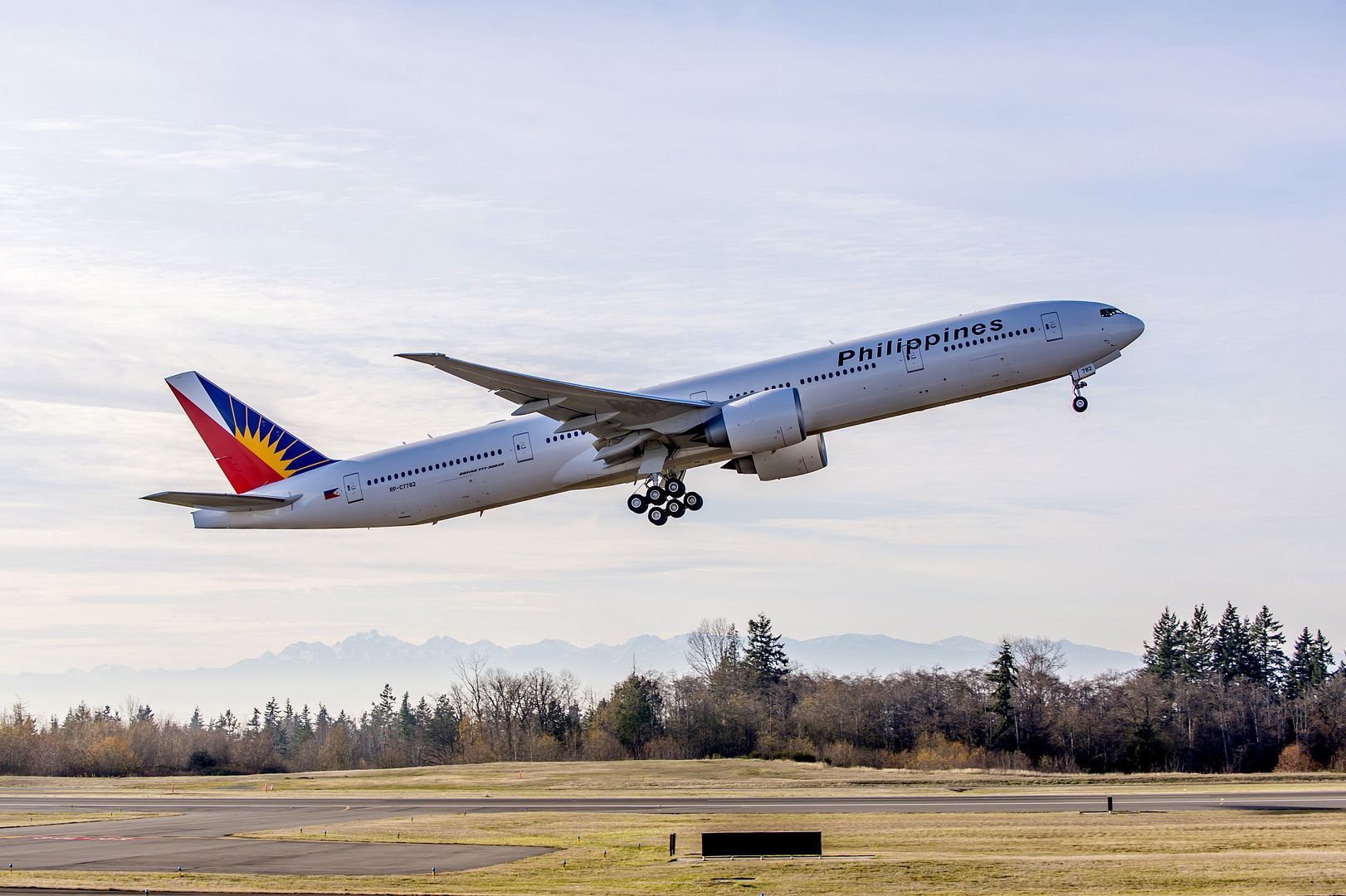
-
 Main AdminEDWARDS AIR FORCE BASE, Calif. --
Main AdminEDWARDS AIR FORCE BASE, Calif. --
Testers from the 461st Flight Test Squadron and F-35 Integrated Test Force (ITF) completed a major test milestone bringing the F-35 Lightning II?s full combat capabilities closer to the battlefield.
Weapons Delivery Accuracy (WDA) flight tests began in July 2013 and testing wrapped up earlier this month. The WDA portion of the F-35 developmental test and evaluation mission ensures the fifth-generation fighter?s weapons system can deliver lethal ordnance both air-to-air and air-to-ground using the jet?s warfighting Block 3F software.
The ITF used all three F-35 variants and delivered air-to-air missiles including AIM-120s, the AIM-9X and the United Kingdom?s Advanced Short Range Air-to-Air Missile. The WDA tests also confirmed air-to-ground delivery of the Paveway IV laser-guided bomb, GBU-39 small diameter bomb, GBU-12, GBU-31 Joint Direct Attack Munition and the AGM-154 Joint Standoff Weapon.
?Weapons delivery accuracy tests are important, because without proof that the F-35 can actually drop these weapons where we need them to go, then the F-35 is just an information-gathering system,? said Lt. Col. Tucker Hamilton, 461st FLTS commander and F-35 ITF director. ?The F-35 proved it was extremely capable in delivering these weapons where we wanted it and how we wanted it delivered. These are the most complicated and intricate missions that we had and the jet did extremely well.?
Hamilton said the air-to-air accuracy tests finished in August with air-to-ground tests ending in October. The F-35 ITF then capped off WDA tests by completing testing on the F-35?s GAU-22 25mm gun at the beginning of December. The WDA gun tests included the Air Force?s A variant where the gun is internal carried and on the Marine Corps? and Navy?s B and C variants, which employ a gun pod beneath the jet.
Each weapon test required multiple missions including software development, ?dry runs? and then the actual weapon release. Not including the gun, Hamilton said the F-35 ITF delivered 55 weapons during WDA testing, which was mainly done over the military sea range off the California coast and at Naval Air Weapons Station China Lake in California.
Maj. Jonathan Gilbert, 461st FLTS, completed the final air-to-ground WDA test as a new test pilot to the F-35 Integrated Test Force.
?I didn't even know it was a milestone, I just knew I was dropping a weapon,? said Gilbert. ?It wasn't until after that I felt the excitement from the team and the squadron to close out the WDA program. It is a credit to the team and the planning as it did not appear this would be achievable in the time the squadron accomplished it in, but yet they were able to complete it. I just had the pleasure of dropping the last one.?
Hamilton said the F-35 Joint Program Office analyzes the data from all the WDA tests and any upgrades to the F-35 mission systems software will be sent out to the F-35 operational fleet.
?When they get their 3F software, the one that is going to be productionized for full 3F capability, [the fleet] will be confident they can load these weapons and drop them on the target they?re selecting,? Hamilton said.
The F-35 Integrated Test Force, operating at both Edwards AFB and at Naval Air Station Patuxent River in Maryland, continues to conduct developmental flight test for the Defense Department?s F-35 Joint Program Office. Ongoing testing at Edwards AFB includes mission effectiveness testing, suppression of enemy air defenses, maritime interdiction, and offensive and defensive air-to-air combat testing.
?The ITF takes these extremely challenging and intricate data requirements and then finds a way to coordinate with multiple outside agencies, drones, tankers, ranges and basically conduct these missions and make them happen in a historical manner,? said Hamilton. ?No one before them has ever been able to pull off executing weapons deliveries like the individuals in the ITF.?
ST. LOUIS, Dec. 19, 2017 ? Boeing [NYSE:BA] for the first time is showing what it believes is the unmanned aircraft system (UAS) best suited for refueling U.S. Navy jets operating from aircraft carriers.
Through its MQ-25 competition, the Navy is seeking unmanned refueling capabilities that would extend the combat range of deployed Boeing F/A-18 Super Hornet, Boeing EA-18G Growler, and Lockheed Martin F-35C fighters. The MQ-25 will also have to seamlessly integrate with a carrier?s catapult and launch and recovery systems.
?Boeing has been delivering carrier aircraft to the Navy for almost 90 years,? said Don ?BD? Gaddis, a retired admiral who leads the refueling system program for Boeing?s Phantom Works technology organization. ?Our expertise gives us confidence in our approach. We will be ready for flight testing when the engineering and manufacturing development contract is awarded.?
The UAS is completing engine runs before heading to the flight ramp for deck handling demonstrations early next year.
The Navy issued its final request for proposals in October. Proposals are due Jan. 3.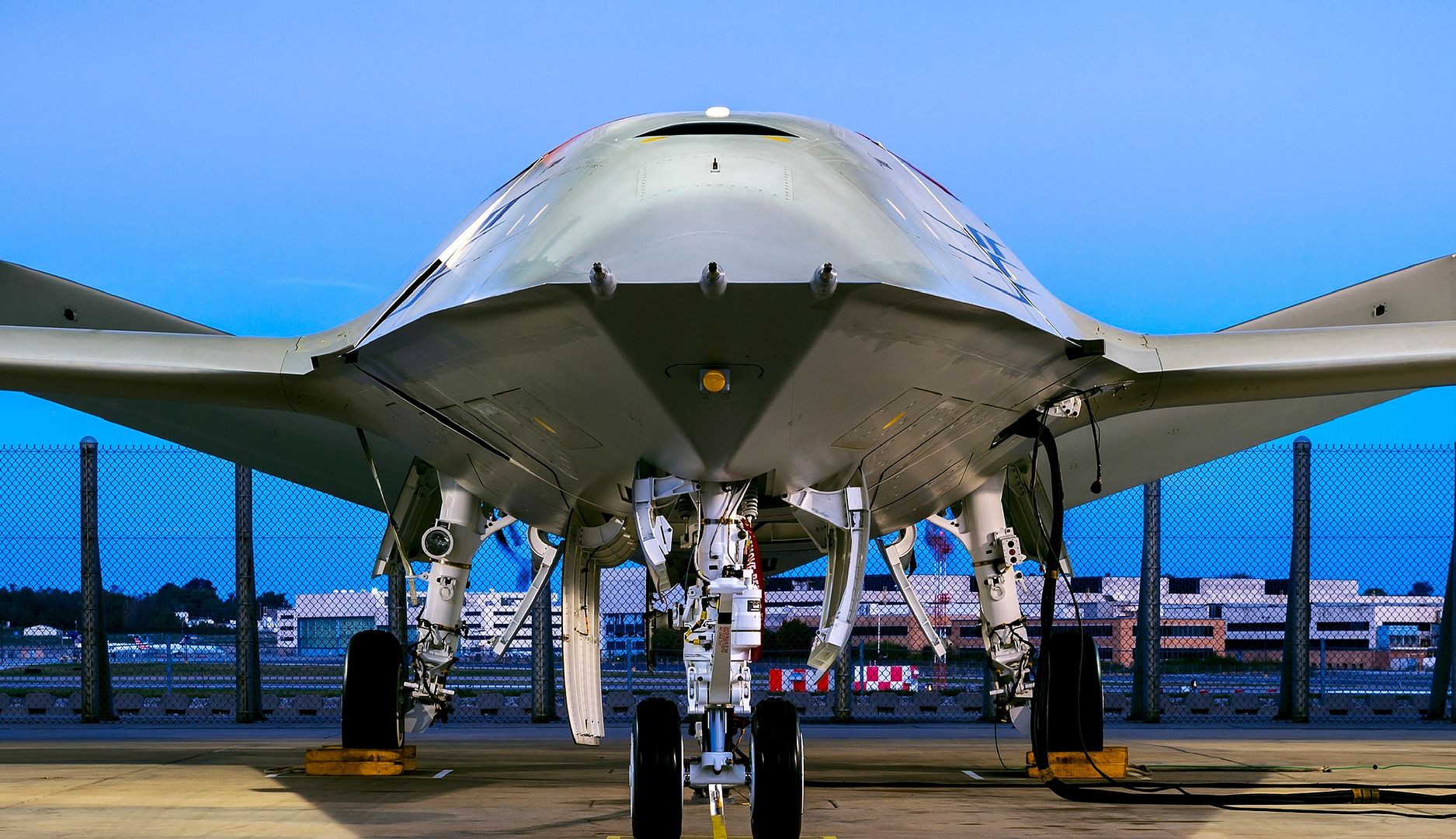
Amarillo, Texas (December 18, 2017) ? Bell Helicopter, a Textron Inc. (NYSE: TXT) company, today announced that its V-280 Valor has achieved first flight. The V-280 Valor is a next-generation tiltrotor that is designed to provide unmatched agility, speed, range and payload capabilities at an affordable cost. This milestone represents exceptional progress on the V-280 development program and brings Bell Helicopter one step closer to creating the next generation of vertical lift aircraft for the U.S. military.
?This is an exciting time for Bell Helicopter, and I could not be more proud of the progress we have made with first flight of the Bell V-280,? says Mitch Snyder, President & CEO for Bell Helicopter. ?First flight demonstrates our commitment to supporting Department of Defense leadership?s modernization priorities and acquisition reform initiatives. The Valor is designed to revolutionize vertical lift for the U.S. Army and represents a transformational aircraft for all the challenging missions our armed forces are asked to undertake.
?We are thrilled to share in this success of the V-280 first flight with Team Valor,? added Snyder. ?The V-280 intends to completely transform what is possible for the military when it comes to battle planning and forward operations.?
The Bell V-280 Valor program is part of the Joint Multi Role Technology Demonstrator (JMR-TD) initiative. The JMR-TD program is the science and technology precursor to the Department of Defense's Future Vertical Lift program. The V-280 program brings together the engineering resources and industrial capabilities of Bell Helicopter, Lockheed Martin, GE, Moog, IAI, TRU Simulation & Training, Astronics, Eaton, GKN Aerospace, Lord, Meggitt and Spirit AeroSystems?collectively referred to as Team Valor.
The Bell V-280 Valor is postured to provide the U.S. Army with the highest levels of maturity and technical readiness. The aircraft is designed to provide the best value in procurement, operations and support, and force structure, while delivering desired leap-ahead performance capabilities with increased maintainability, reliability and affordability to the DoD. With twice the speed and range of conventional helicopters, the Valor is designed to offer maneuver commanders unmatched operational agility to self-deploy and perform a multitude of vertical lift missions currently unachievable in one aircraft. The Bell V-280 is a combat force multiplier with superior performance, payload, survivability, and reliability to give the warfighter the decisive advantage.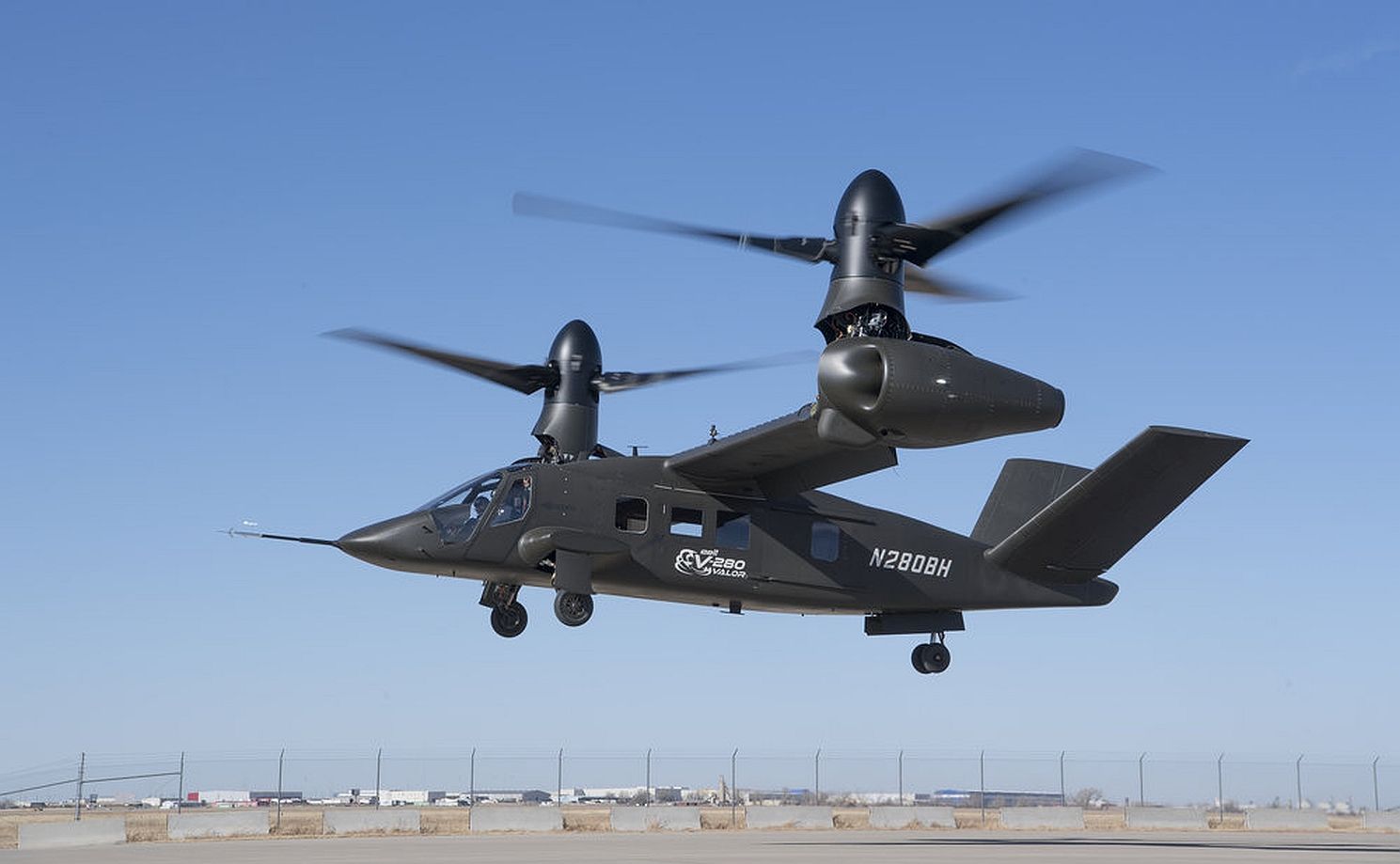
-
 Main AdminAn AH-1Z Viper is staged aboard Joint Base Pearl Harbor-Hickam, Dec. 19, 2017. The first three AH-1Zs to be permanently stationed at Marine Corps Base Hawaii arrived Dec. 15, 2017. The attack helicopters will replace the AH-1W Super Cobras. (U.S. Marine Corps photo by Sgt. Kathy Nunez)
Main AdminAn AH-1Z Viper is staged aboard Joint Base Pearl Harbor-Hickam, Dec. 19, 2017. The first three AH-1Zs to be permanently stationed at Marine Corps Base Hawaii arrived Dec. 15, 2017. The attack helicopters will replace the AH-1W Super Cobras. (U.S. Marine Corps photo by Sgt. Kathy Nunez)
Orion Parachute Tests Prove Out Complex System for Human Deep Space Missions
When NASA?s Orion spacecraft hurtles toward Earth?s surface during its return from deep-space missions, the capsule?s system of 11 parachutes will assemble itself in the air and slow the spacecraft from 300 mph to a relatively gentle 20 mph for splashdown in the Pacific Ocean in the span of about 10 minutes. As the astronauts inside descend toward the water on future missions, their lives will be hanging by a series of threads that have been thoroughly ruggedized, tested and validated to ensure the parachute-assisted end of Orion missions are a success.
Through a series of tests in the Arizona desert, the engineers refining Orion?s parachutes have made the road to certifying them for flights with astronauts look easy, including a successful qualification test Dec. 13 that evaluated a failure case in which only two of the systems three orange and white main parachutes deploy after several other parachutes in the system used to slow and stabilize Orion endure high aerodynamic stresses. But behind the scenes, engineers are working hard to understand and perfect the system that must be able to work across a broad range of potential environmental conditions and bring the crew home.
While Orion?s parachutes may look similar to those used during the Apollo-era to the untrained eye, engineers can?t simply take that parachute system and scale it up to accommodate Orion?s much larger size. Through testing and analysis, technicians have developed Orion?s parachutes to be lighter, better understood and more capable than Apollo?s. NASA has also been able to adjust the system as elements of the spacecraft, such as attachment points, have matured.
?Through our testing, we?ve addressed some known failures that can happen in complex parachute systems to make the system more reliable,? said Koki Machin, chief engineer for the system. ?We built upon the strong foundation laid by Apollo engineers and figured out how to manage the stresses on the system during deployment more efficiently, decrease the mass of the parachutes by using high tech fabric materials rather than metal cables for the risers that attach the parachute to the spacecraft, and improve how we pack the parachute into Orion so they deploy more reliably.?
Orion?s parachute system is also incredibly complex. About 10 miles of Kevlar lines attach the spacecraft to the outer rim of nearly 12,000 square feet of parachute canopy material ? over four times the average square footage of a house ? and must not get tangled during deployment. In addition to the fabric parachutes themselves, there are cannon-like mortars that fire to release different parachutes. Embedded in several parachutes are fuses set to burn at specific times that ignite charges to push blades through bullet proof materials at precise moments, slowly unfurling the parachutes to continue the sequential phases of the deployment sequence. All of these elements must be developed to be reliable for the various angles, wind conditions and speeds in which Orion could land.
With the analysis capabilities that exist today and the historical data available, engineers have determined that approximately 20-25 tests, rather than the more than 100 performed during the Apollo era, will give them enough opportunities to find areas of weakness in Orion?s parachute system and fix them. After the three remaining final tests next year, the system will be qualified for missions with astronauts.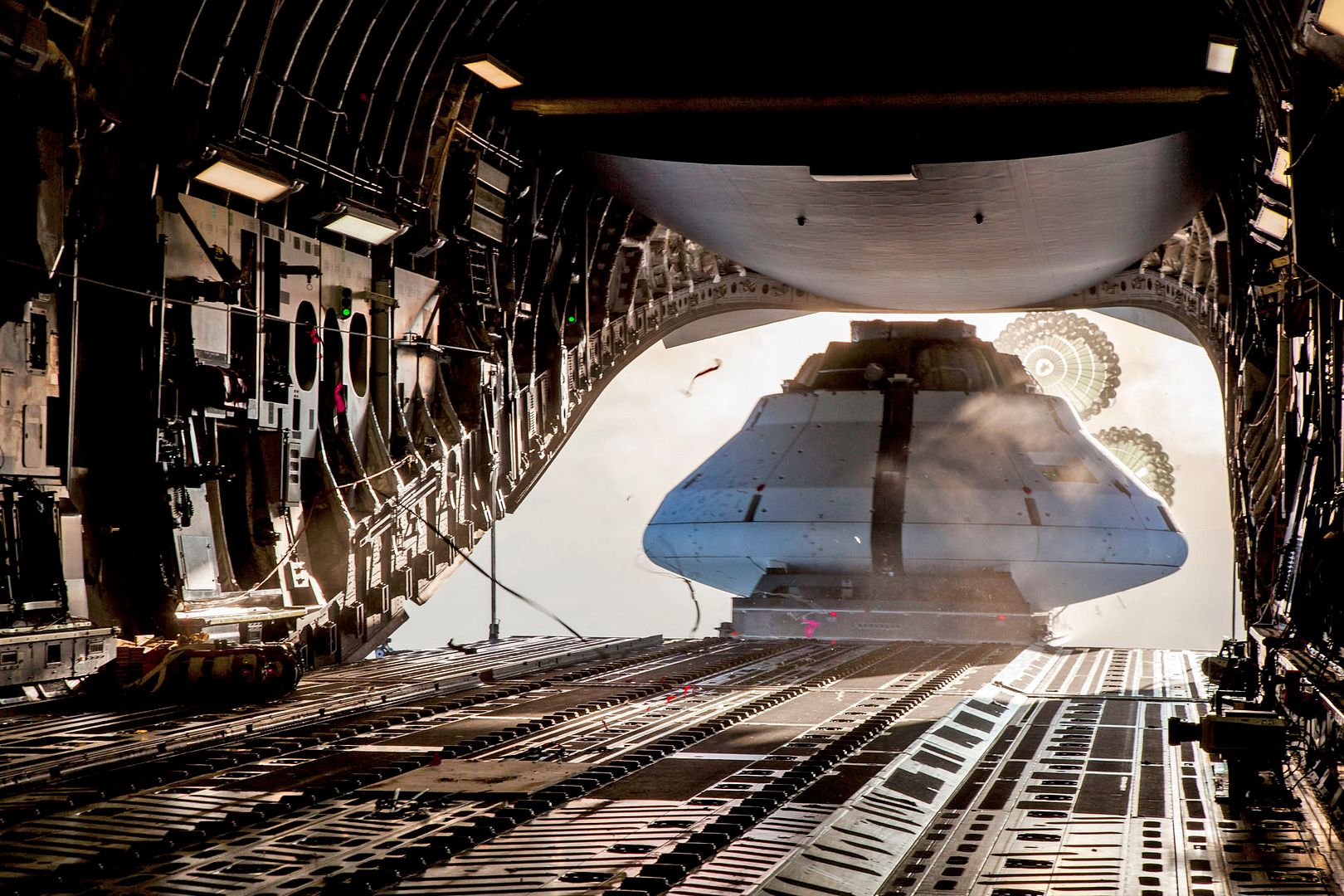
?There are things we can model with computers and those we can?t. We have to verify the latter through repeated system tests by dropping a test article out of a military aircraft from miles in altitude and pushing the parachutes to their various limits,? said CJ Johnson, project manager for the parachute system. ?Lots of subtle changes can affect parachute performance and the testing we do helps us account for the broad range of possible environments the parachutes will have to operate in.?
Orion parachute engineers have also provided data and insight from the tests to NASA?s Commercial Crew Program partners. NASA has matured computer modeling of how the system works in various scenarios and helped partner companies understand certain elements of parachute systems, such as seams and joints, for example. In some cases, NASA?s work has provided enough information for the partners to reduce the need for some developmental parachute tests.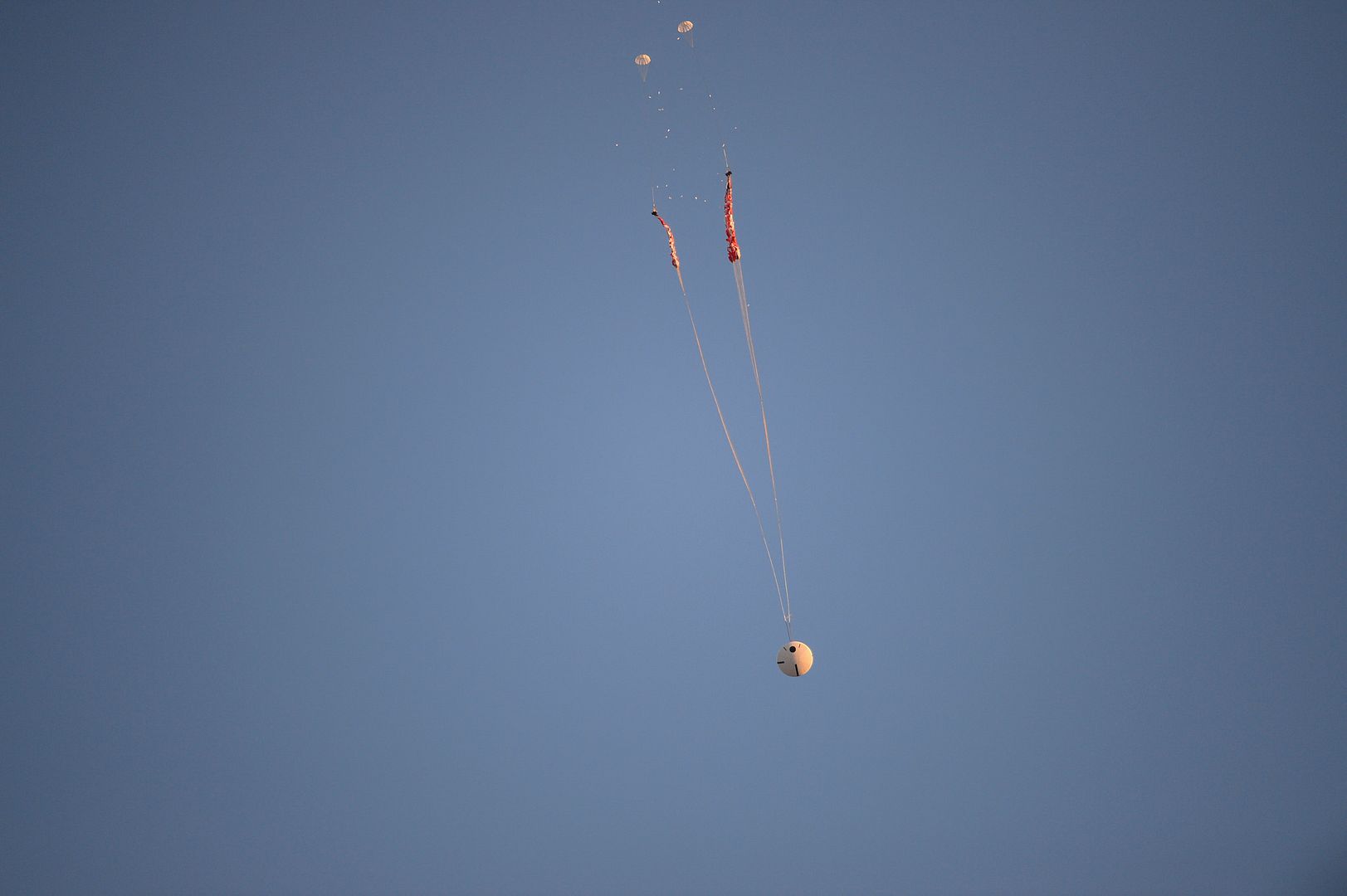
?Orion?s parachute system is an extremely lightweight, delicate collection of pieces that absolutely must act together simultaneously or it will fail,? said Machin. ?It alone, among all the equipment on the crew module, must assemble itself in mid-air at a variety of possible velocities and orientations.?
Parachute testing is just one part of the vast expanse of work being performed across the country that enable humans to venture farther into space than ever before.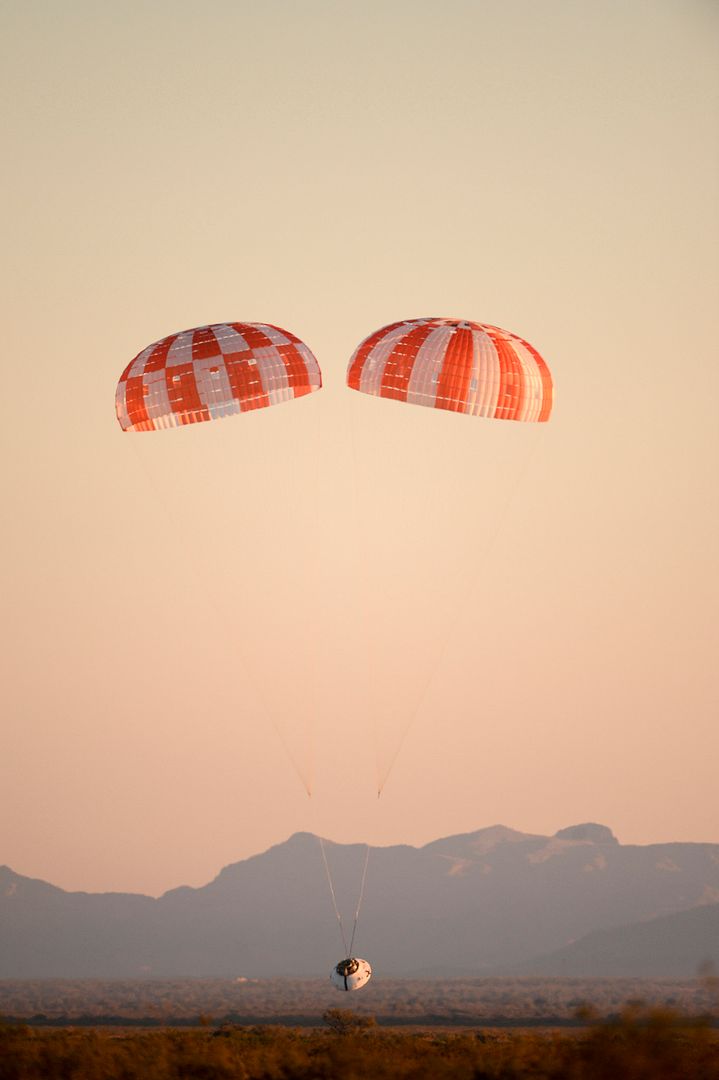
Dec 20 2017
Boeing congratulates the Indian Air Force and 81st ?Skylords? Squadron for the C-17 Globemaster III fleet achieving 12,000 flight hours since induction in 2014.
The C-17 fleet is a vital part of the Indian Air Force strategic airlift capability, which has successfully conducted relief and humanitarian missions domestically and internationally.
The Indian Air Force operates 10 C-17 strategic airlifters that Boeing delivered in 2014. Boeing works with the Indian Air Force to provide sustainment services and modernization of its C-17s that contribute to high mission capable rates. (Boeing photo)
Global offshore service provider Babcock International has taken delivery of two H175s at a ceremony in Darwin, Australia. Babcock?s aircraft are the first H175s to be introduced into the southern hemisphere and will be based in Dili, Timor Leste. The new aircraft will be used to transport personnel and provide search and rescue and medevac support in the Timor Sea, approximately 500 kilometres northwest of Darwin.
Both H175s were freighted to Australia on a single Antonov cargo plane to secure their quick introduction to service on 1 January 2018. The Airbus team has worked closely with Babcock to train 27 pilots and engineers in the assembly, flight and maintenance of the H175s. Babcock will employ a further 19 Timorese to support the aircraft at their base, including four local engineers who will attend training at Airbus Helicopters? headquarters in France in early 2018.
In making their selection of the H175, Babcock noted that the aircraft is the ?best of type? for their purposes, offering excellent payload and superior single-engine performance. The two new helicopters join Babcock?s existing global fleet of xx H175s and will support the company?s regional footprint as they transfer more than 9000 passengers and 30 tonnes of freight each year.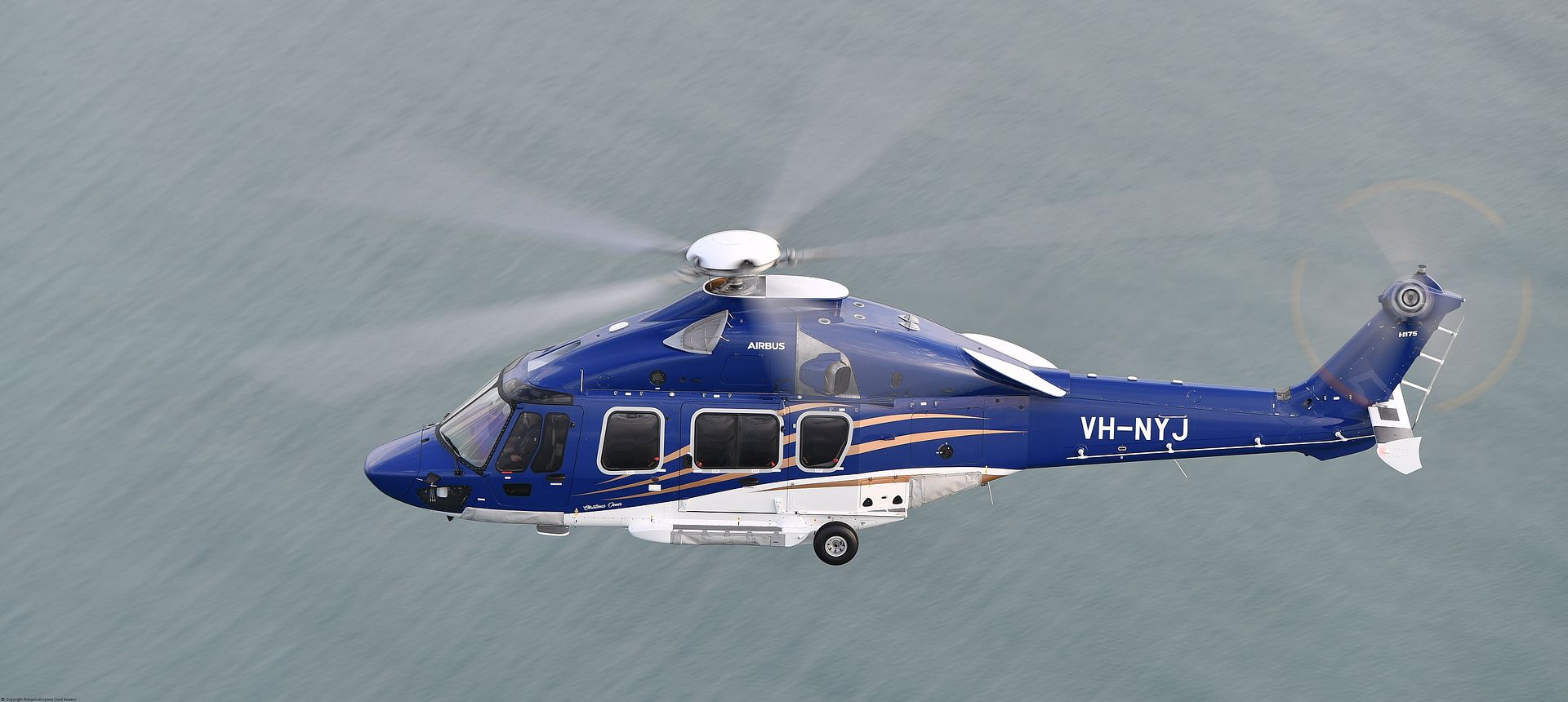
For Airbus, Babcock?s delivery further demonstrates the success of the Airbus H175 programme in offshore operations, following the aircraft?s introduction in the North Sea, Western Africa and the Gulf of Mexico. With extremely powerful engines, up to 270 nautical miles radius of operation and the latest technology in avionics and automation, the H175 was specifically designed to be extremely safe and competitive in the oil and gas, and search and rescue sectors.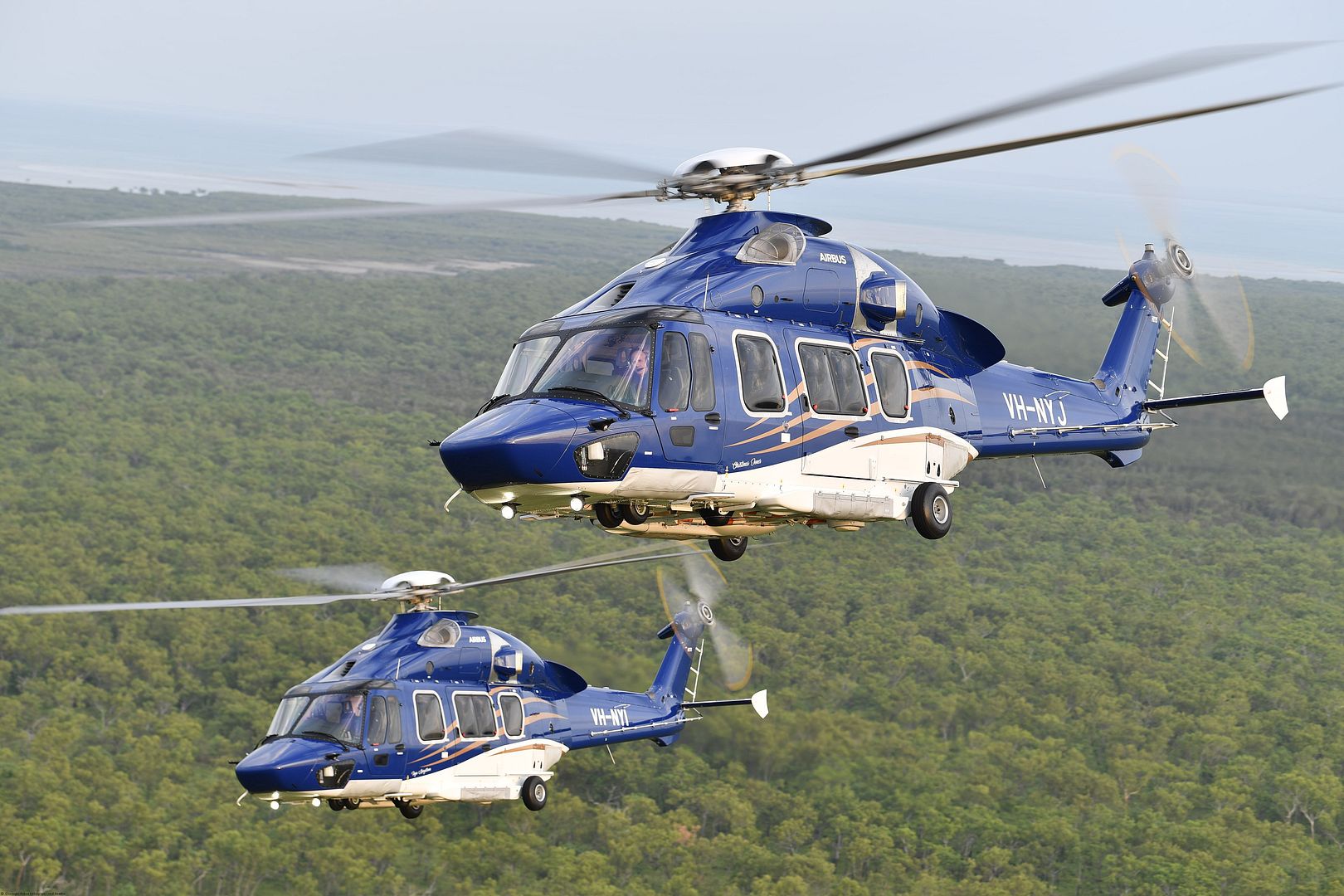
Airbus has been a proud partner in the Australasian oil and gas market for many decades. The H175 continues this partnership and paves the way for the decades ahead.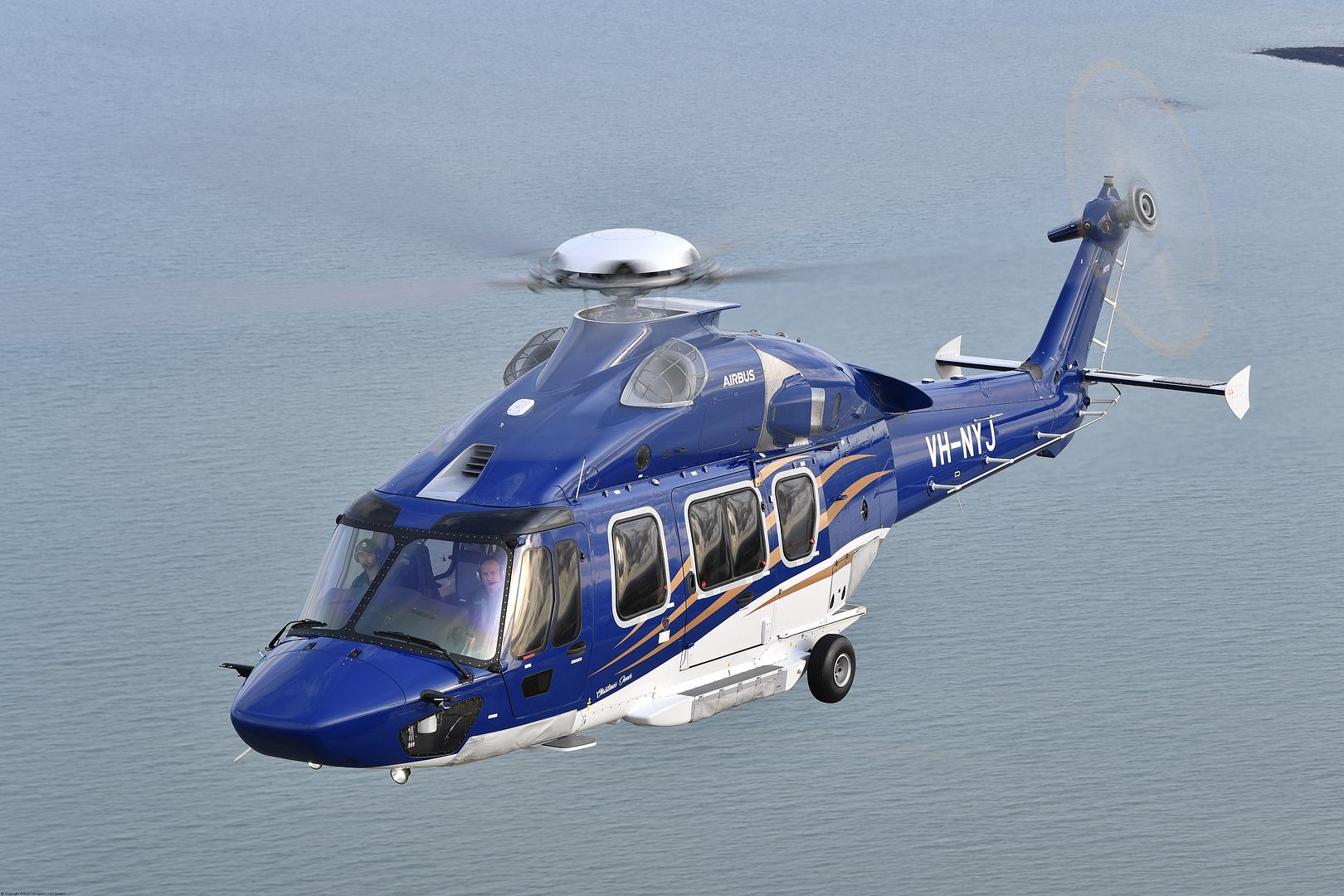
S?o Jos? dos Campos, Brazil, December, 20th, 2017 ? The new Embraer KC-390 military transport and aerial refueling jet completed a relevant milestone today, with Embraer demonstrating to the Brazilian Air Force (FAB) the attainment of the Initial Operational Capability (IOC). The achievement of the IOC ensures the necessary conditions have been met for the aircraft to start operations, in accordance with the scope agreed upon with the FAB. As part of the IOC, Embraer obtained a KC-390 Provisional Type Certificate from the Brazilian National Civil Aviation Agency (ANAC), which is a testament to the adequacy of the design in fulfilling the demanding certification requirements for transport aircraft. ?We are pleased to announce the achievement of this important milestone for the KC-390 Program,? said Jackson Schneider, President and CEO of Embraer Defense & Security. ?The certification campaign has progressed as planned and the tests performed have been very successful, proving the maturity of the aircraft and confirming the performance and the anticipated capacities.? To date, the tests campaign has accumulated more than 1,500 flight hours with 2 prototypes and more than 40,000 hours of laboratory testing of the aircraft's various systems. The structural tests campaign is nearing completion, with only the full-scale fatigue test remaining. According to the schedule, in 2018, the final Type Certificate will be issued by ANAC. Additionally, in-flight tests of various military functionalities will be completed, including the remaining aerial refueling and cargo dropping tests, to fulfill the requirements to receive the final military certification of the aircraft with the achievement of the Final Operational Capability ? FOC. The delivery of the first series aircraft to the FAB is scheduled to take place in 2018.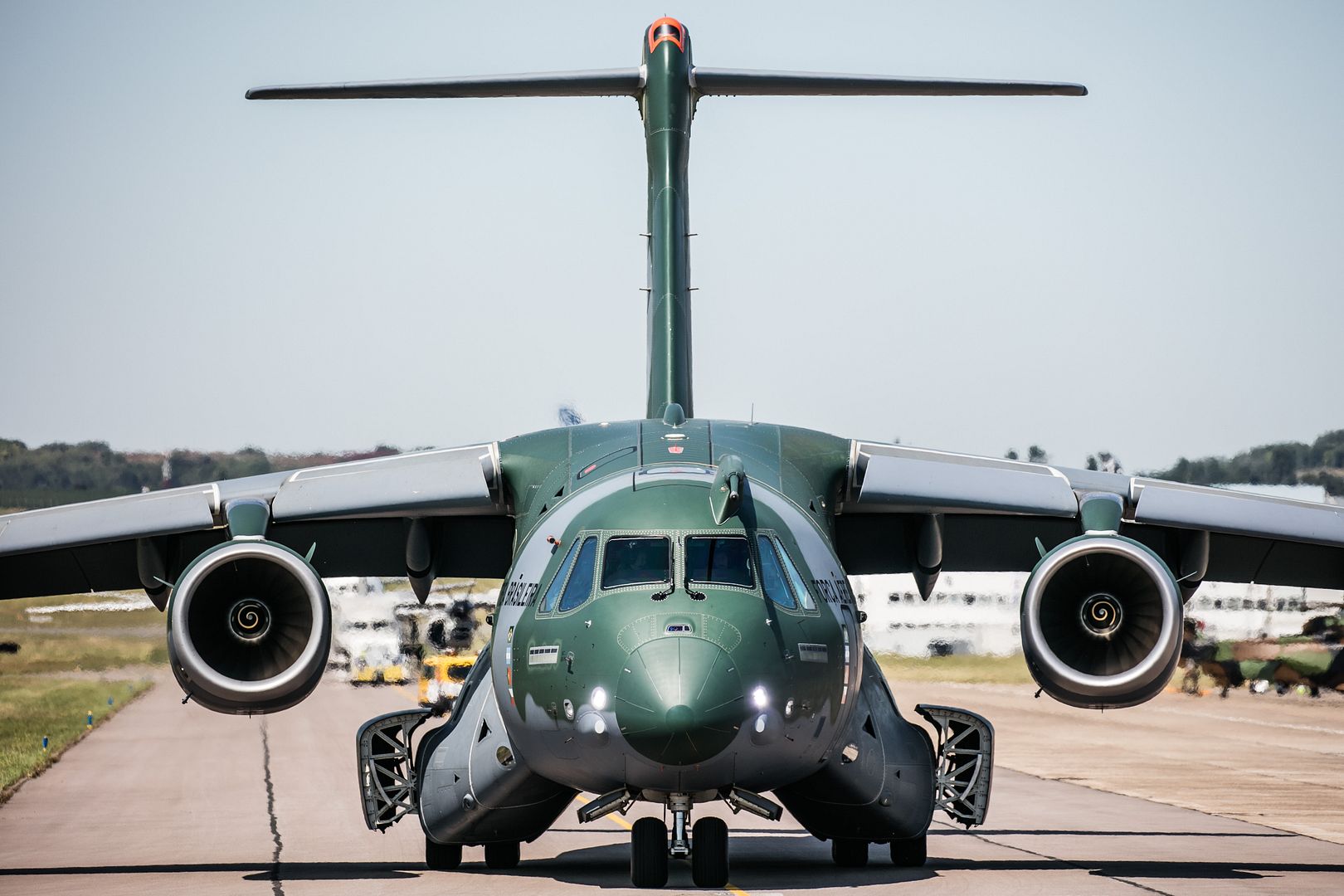
-
 Main AdminThe sun rises over a busy flightline of C-130H Hercules in the early morning at the 179th Airlift Wing, Mansfield, Ohio, as maintainers perform engine runs, Dec. 21, 2017. The 179th AIrlift Wing is always on a mission to be the first choice to respond to state and federal missions with a trusted team of Airmen. (U.S. Air National Guard photo's by Tech. Sgt. Joe Harwood\Released)
Main AdminThe sun rises over a busy flightline of C-130H Hercules in the early morning at the 179th Airlift Wing, Mansfield, Ohio, as maintainers perform engine runs, Dec. 21, 2017. The 179th AIrlift Wing is always on a mission to be the first choice to respond to state and federal missions with a trusted team of Airmen. (U.S. Air National Guard photo's by Tech. Sgt. Joe Harwood\Released)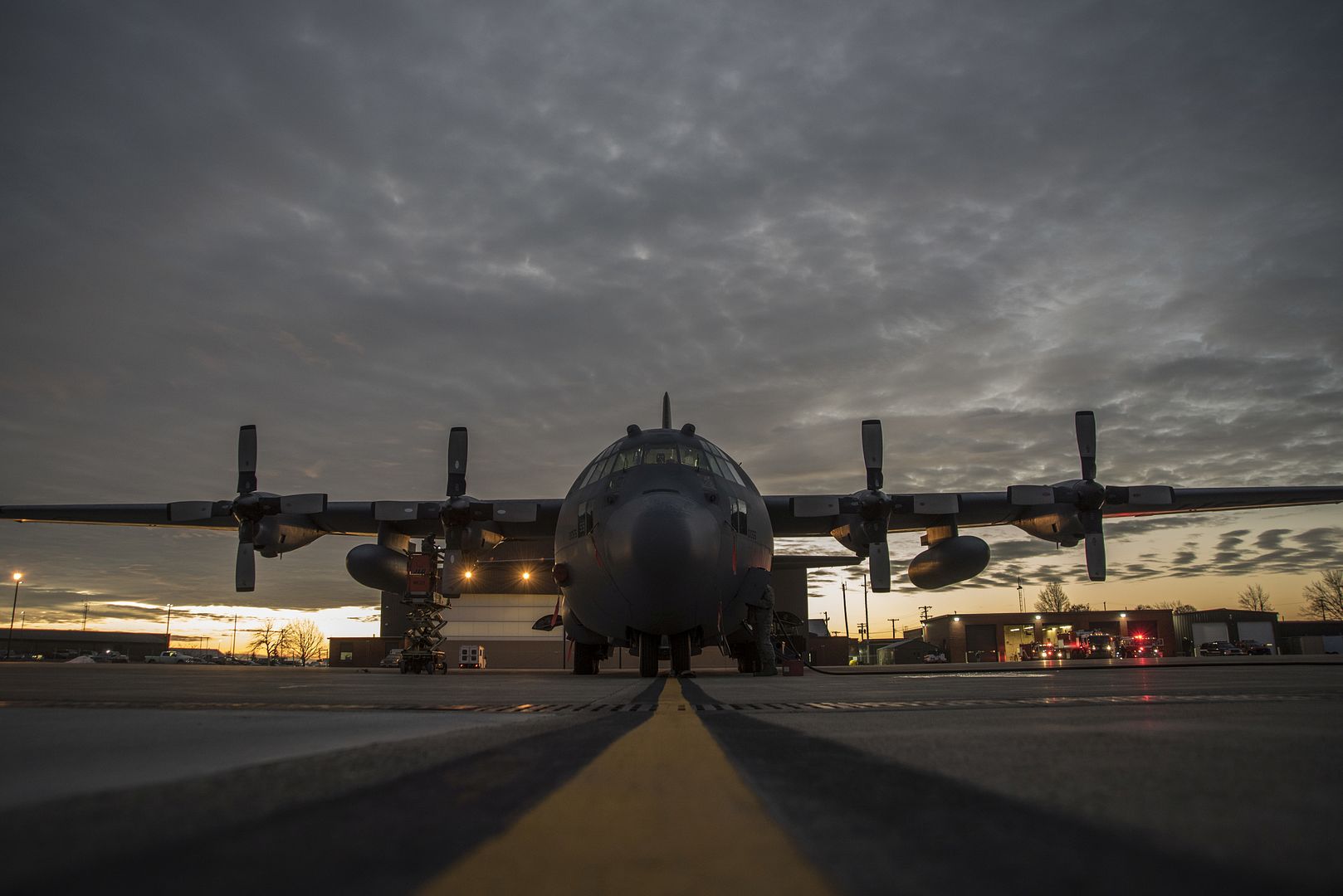
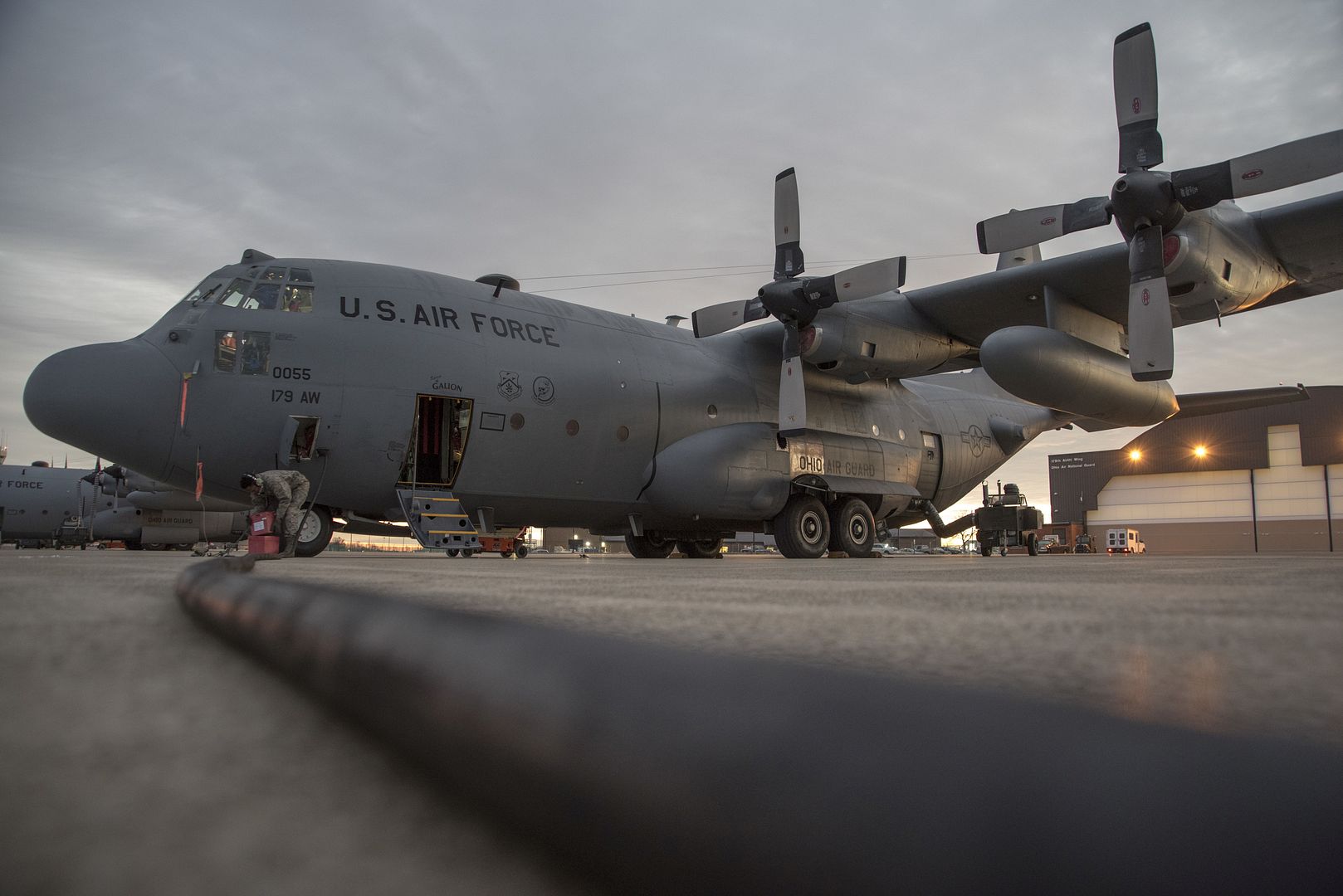
Hawaii?s first three AH-1Z Vipers arrive aboard Marine Corps Air Station, Kaneohe Bay, Dec. 19, 2017. The arrival of the 4th generation attack helicopters enhances the capabilities and power projection of Marine Light Attack Helicopter Squadron 367, Marine Aircraft Group 24, 1st Marine Aircraft Wing and MCBH. (U.S. Marine Corps Photo by Sgt. Alex Kouns)
EVERETT, Wash., Dec. 21, 2017 ? The U.S. Federal Aviation Administration (FAA) has granted Boeing?s [NYSE: BA] KC-46 tanker program an Amended Type Certificate (ATC) for its core 767-2C aircraft configuration, verifying that the fundamental design of the KC-46 tanker is safe and reliable.
The 767-2C is a modified version of the company?s commercial 767 with revised structure, wiring and plumbing.
?This is a key building block for the KC-46 program in that it retires risk and builds confidence as we continue our test efforts and work to complete the next phase of certification,? said Mike Gibbons, Boeing KC-46A tanker vice president and program manager. ?The U.S. Air Force is getting an efficient, reliable, combat capable tanker and we appreciate the FAA?s collaboration to ensure the aircraft is the best it can be.?
In order to receive the certification, Boeing?s team, which included Commercial Airplanes and Defense, Space & Security personnel, completed a series of analyses and lab, ground and flight tests that focused on the aircraft?s fundamental capabilities including avionics, auto-flight and environmental control systems, as well as its new fuel system. The resulting data validated that all systems operated as intended.
The ATC is one of two FAA airworthiness certifications required for the KC-46 program. A combined Boeing/Air Force team has been concurrently completing Supplemental Type Certificate (STC) work, which encompasses the military systems that are installed on the 767-2C to make it a tanker.
?We continue to make good progress on the STC effort ? 83 percent complete at present ? and have moved into the FAA flight-testing phase,? Gibbons added.
The program has six aircraft that have supported various segments of ATC and STC testing. Overall they have completed 2,200 flight hours as well as more than 1,600 ?contacts? during refueling flights with F-16, F/A-18, AV-8B, C-17, A-10, KC-10 and KC-46 aircraft.
The KC-46, derived from Boeing?s commercial 767 airframe, is built in the company?s Everett, Wash., facility. Boeing is currently on contract for the first 34 of an expected 179 tankers for the U.S. Air Force.
The KC-46A is a multirole tanker that can refuel all allied and coalition military aircraft compatible with international aerial refueling procedures and can carry passengers, cargo and patients.
Leading LCC in Turkey now with a total of 100 Airbus A320 Family aircraft on order
Pegasus Airlines, the leading Low-Cost-Carrier (LCC) in Turkey, has placed an order for 25 A321neo ACF (Airbus Cabin Flex configuration). This comes on top of 18 A321neo and 57 A320neos already on order, bringing Pegasus Airlines? total firm order to 100 Airbus A320 Family aircraft.
Pegasus? selection to move to an all-Airbus fleet reflects its strategy to grow its domestic as well as its international network with the best middle-of-the-market aircraft available.
Pegasus Airlines General Manager Mehmet T. Nane: ?Turkey keeps strengthening its position in the world aviation market everyday and we as Pegasus are an important part of this transformation. The order we placed in 2012 for 100 Airbus aircraft was the biggest order in Turkey?s aviation history at the time. We received the first aircraft of this order in Q3 2016 and now we have an agreement to convert 25 options into firm orders. We will continue to grow our fleet one step at a time and with our new aircraft we will continue to offer more comfortable flights for our passengers.?
?The latest Pegasus Airlines? order for the A321neo ACF variant underlines that Airbus offers the best, most efficient and most comfortable solution in the Middle of the Market segment,? said John Leahy, Chief Operating Officer ? Customers, Airbus Commercial Aircraft. ?Combining latest innovations in cabin design with unprecedented capacity and range capabilities, the A321 ACF will further boost the airline?s passenger experience and competitiveness in the highly contested growth market while reducing its environmental footprint.?
The A321 is the largest member of the A320 Family, seating up to 240 passengers. Incorporating the latest engines, aerodynamic advances, and cabin innovations, the A321neo offers a significant reduction in fuel consumption of at least 15 percent per seat from day one and 20 percent by 2020.
The A321neo ACF introduces new door and fuselage enhancements allowing airlines to make better use of the cabin space and also provide provision for more underfloor fuel capacity for up to a 4,000 nautical mile transatlantic range. With more than 5,200 orders received from 95 customers, the A320neo Family has captured nearly 60 percent share of the market.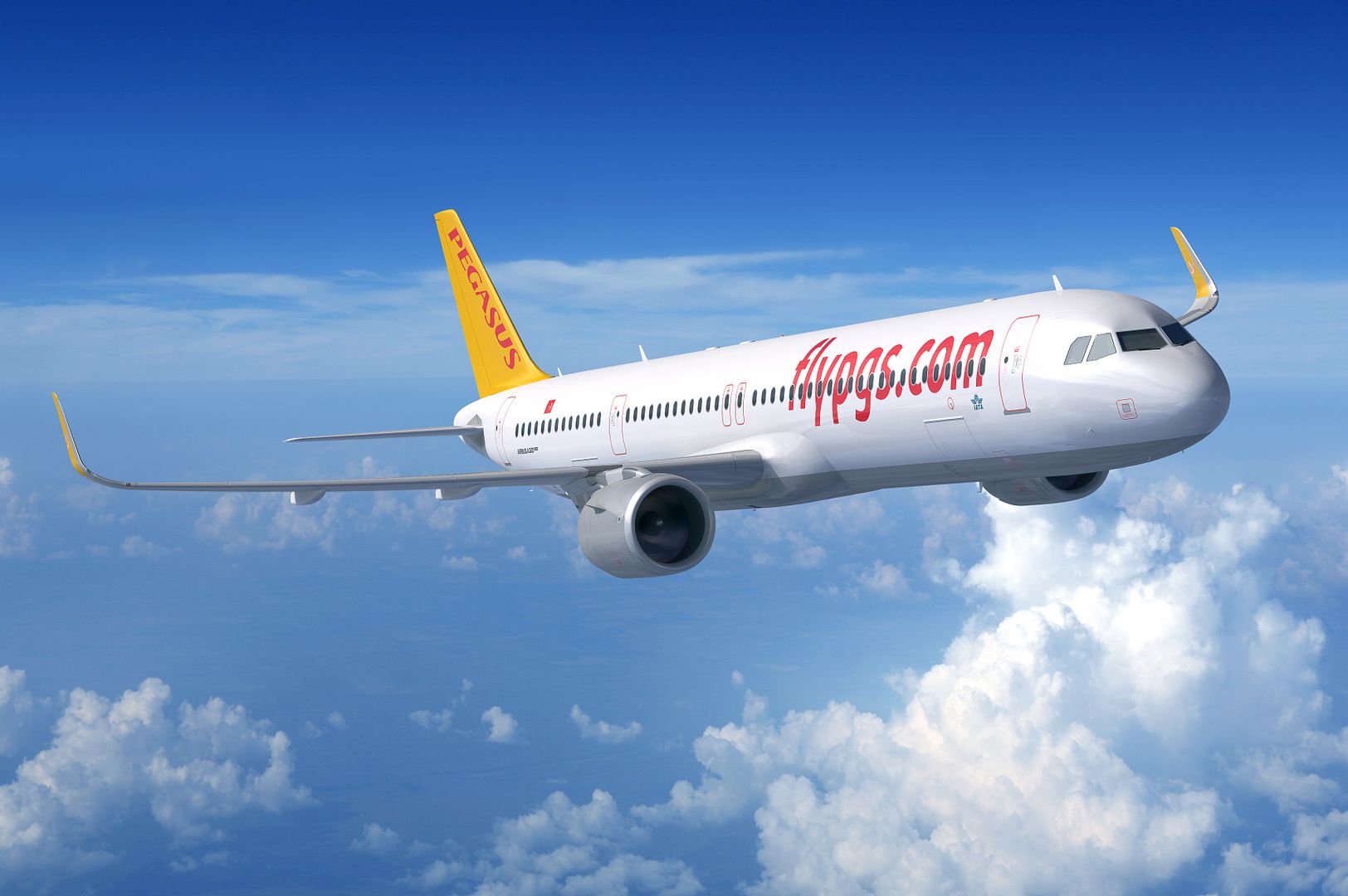
-
 Main AdminSEATTLE, Dec. 27, 2017 /PRNewswire/ -- Boeing [NYSE:BA] and Royal Air Maroc (RAM) today announced orders for (4) 787-9 Dreamliners ? valued at $1.1 billion at list prices ? that will enable Morocco's flag carrier to expand international service.
Main AdminSEATTLE, Dec. 27, 2017 /PRNewswire/ -- Boeing [NYSE:BA] and Royal Air Maroc (RAM) today announced orders for (4) 787-9 Dreamliners ? valued at $1.1 billion at list prices ? that will enable Morocco's flag carrier to expand international service.
The orders, previously listed as unidentified on Boeing's Orders & Deliveries website, include two 787s purchased in December 2016 and two purchased this month.
Royal Air Maroc, which has already taken delivery of five 787-8s, will grow its fleet of fuel-efficient 787s to a total of nine airplanes. Royal Air Maroc flies 787s on international routes from Casablanca to North America, South America, the Middle East and Europe, and with the additional airplanes plans to expand service to these areas.
"Today Royal Air Maroc has direct flights to 80 international destinations. Thanks to our unique position as a geographic hub and high quality of service, we bring customers from all over the world to their destinations. With more than 850 flights per month to Africa, Royal Air Maroc has the broadest presence across the continent of any airline," said Abdelhamid Addou, CEO and Chairman of Royal Air Maroc. He added, "Our vision is to be the leading airline in Africa in terms of quality of service, quality of planes and connectivity. Ordering new-generation planes such as the Dreamliner puts our airline on the right track to fulfill our vision."
"Royal Air Maroc's additional 787 orders are a terrific endorsement of the Dreamliner's economic performance, fuel efficiency and unrivalled passenger experience," said Ihssane Mounir, senior vice president of Global Sales and Marketing for Boeing Commercial Airplanes. "Expanding the relationship between our companies that began nearly 50 years ago, Boeing is proud to support Royal Air Maroc's growth plans within Africa and further connect Morocco to the world."
Royal Air Maroc is celebrating its 60th anniversary this year. Its fleet includes more than 56 Boeing airplanes, including 737s, 767-300ERs, 787s and a 747-400. The Casablanca-based carrier operates a domestic network throughout Morocco and serves more than 80 destinations across Africa, the Middle East, Europe, North America and South America.
The Boeing 787 Dreamliner is a family of super-efficient airplanes with new passenger-pleasing features. The 787-9's fuselage is stretched by 20 feet (6 meters) over the 787-8 and can fly 290 passengers up to 14,140 kilometers in a typical two-class configuration. The 787's unparalleled fuel efficiency ? reducing fuel use and carbon emissions by 20 percent compared to airplanes it replaces ? and range flexibility enable carriers to profitably open new routes and optimize fleet and network performance. To serve passengers, the Dreamliner offers large, dimmable windows, large stow bins, modern LED lighting, higher humidity, a lower cabin altitude, cleaner air and a smoother ride.
Boeing also is a longstanding partner to Morocco, supporting the country's development of its aerospace industry and workforce. Boeing and Safran are joint venture partners in Morocco Aero-Technical Interconnect Systems (MATIS) Aerospace in Casablanca, a high-quality supplier that employs more than 1,000 people building wire bundles and wire harnesses for Boeing and other aerospace companies.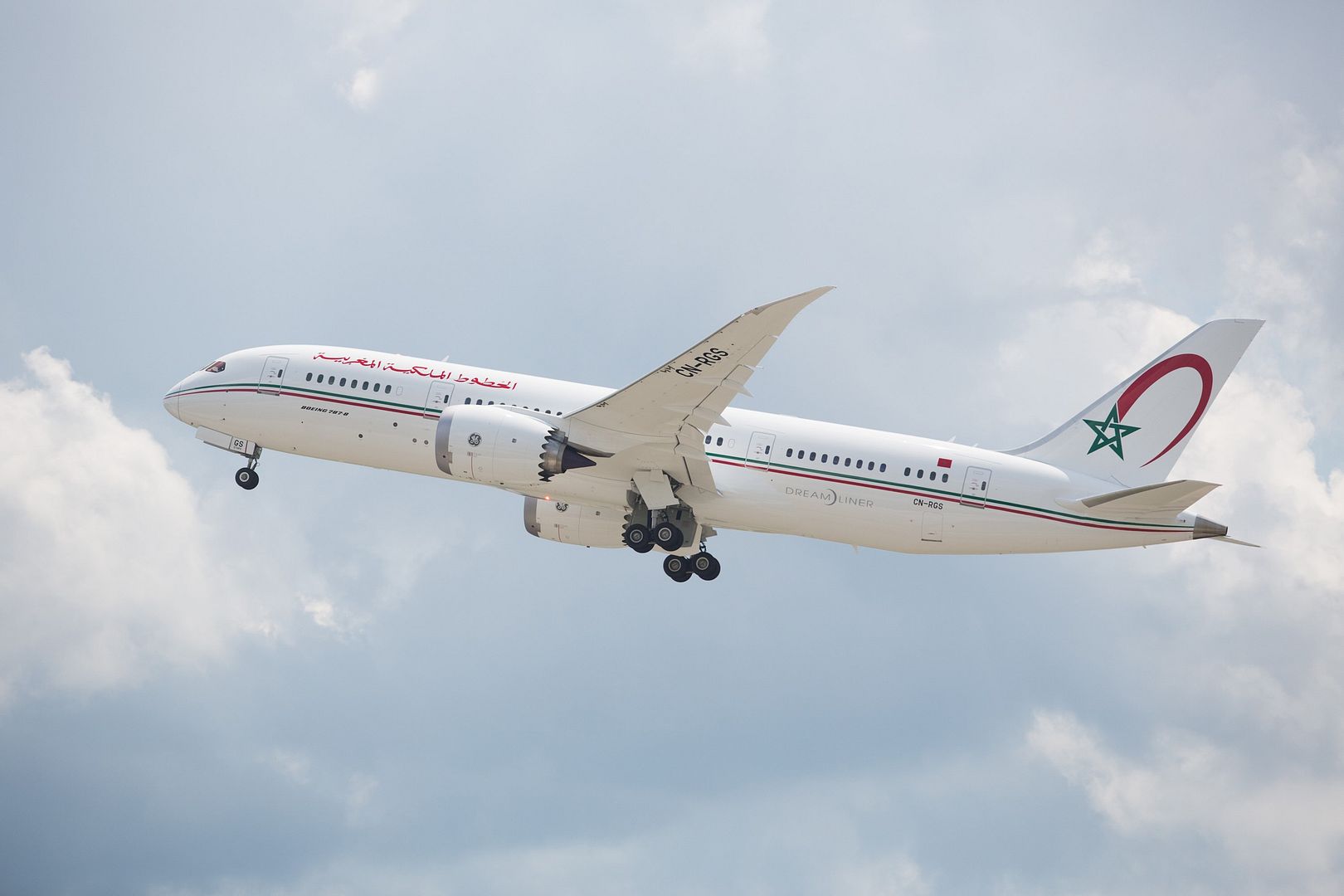
Airbus announced today that it had finalized agreements with Indigo Partners and its four portfolio airlines for the purchase of 430 additional A320neo Family aircraft for ultra-low-cost airlines Frontier Airlines (United States), JetSMART (Chile), Volaris (Mexico) and Wizz Air (Hungary). The signed purchase agreement follows a Memorandum of Understanding among the parties announced at the Dubai Air Show last month.
The 430-aircraft order is made up of 274 A320neos and 156 A321neos worth $49.5 billion at list prices. Airlines in the Indigo Partners family had previous placed orders for a total of 427 A320 Family aircraft.
?These customer-friendly and efficient A320neo Family aircraft form a great platform for continued growth for our family of ultra-low-cost airlines,? said Bill Franke, Managing Partner of Indigo Partners. ?The Indigo Partners team looks forward to creating even more value for even more passengers around the world with these modern and efficient aircraft.?
John Leahy, Airbus? Chief Operating Officer, Customers, added, ?Bill Franke and the teams from Wizz, Volaris, JetSMART and Frontier are great partners, and the global Airbus team is very proud to continue to meet their growing needs for aircraft that provide value, reliability and comfort. The A320neo Family offers the lowest operating costs, longest range and most spacious cabin in the single-aisle aircraft market, making the ?NEO? a great choice for these low-cost airlines in the Americas and Europe.?
The aircraft ordered today are a mix of A320neos and A321neos and will be delivered to the individual airlines as follows:
Wizz - 72 A320neo, 74 A321neo
Frontier - 100 A320neo, 34 A321neo
JetSMART - 56 A320neo, 14 A321neo
Volaris - 46 A320neo, 34 A321neo
Indigo Partners? Franke indicated that engine selections will be made at a later date.
The A320neo Family incorporates the very latest technologies, including new generation engines and Sharklet wing-tip devices, which together will deliver 20 percent fuel savings by 2020. With more than 5,800 orders received from 98 customers since its launch in 2010, the A320neo Family has captured some 60 percent market share.
Indigo Partners LLC, based in Phoenix, Arizona, is a private equity fund focused on worldwide investments in air transportation.
-
 Main AdminSTRATFORD, Conn., Jan. 2, 2018 /PRNewswire/ -- The S-92? helicopter produced by Sikorsky, a Lockheed Martin company (NYSE: LMT), takes center stage in the debut of the new Science Channel series "Mega Machines."
Main AdminSTRATFORD, Conn., Jan. 2, 2018 /PRNewswire/ -- The S-92? helicopter produced by Sikorsky, a Lockheed Martin company (NYSE: LMT), takes center stage in the debut of the new Science Channel series "Mega Machines."
This debut episode airs Thursday, Jan. 4, at 10 p.m. EST/PST on the Science Channel. The engineering-focused show highlights the robust design and reliability of the S-92 and features Cougar Helicopters Inc., which exclusively operates S-92 helicopters and performs search and rescue and worker transport missions to oil rigs off the Canadian coast.
"With a fleet of nine S-92 helicopters, Cougar is proud to tell the story of our use of this powerful and reliable machine to save lives in one of the world's most demanding environments," said Hank Williams, Chief Operating Officer, Cougar Helicopters Inc.
"Sikorsky's founder, Igor Sikorsky, envisioned the helicopter as a life-saving machine," said Dana Fiatarone, Sikorsky's vice president for Commercial Systems & Services. "Sikorsky is thrilled to participate and show viewers how our engineering and design philosophies are providing the platform of choice to save lives today, all while supporting our founder's vision."
The one-hour episode examines the technologies that distinguish the S-92 helicopter and follows a Cougar Helicopters Inc. crew as they demonstrate search and rescue missions in a variety of difficult environments.
Sikorsky will celebrate the delivery of the 300th S-92 helicopter to its global fleet in the first quarter of 2018. With a best-in-class safety record and industry-leading dispatch availability, the multi-mission S-92 aircraft is the preferred aircraft of its size class for offshore oil worker transportation and search and rescue, as well as head of state missions and a variety of transportation missions for utility and airline passengers.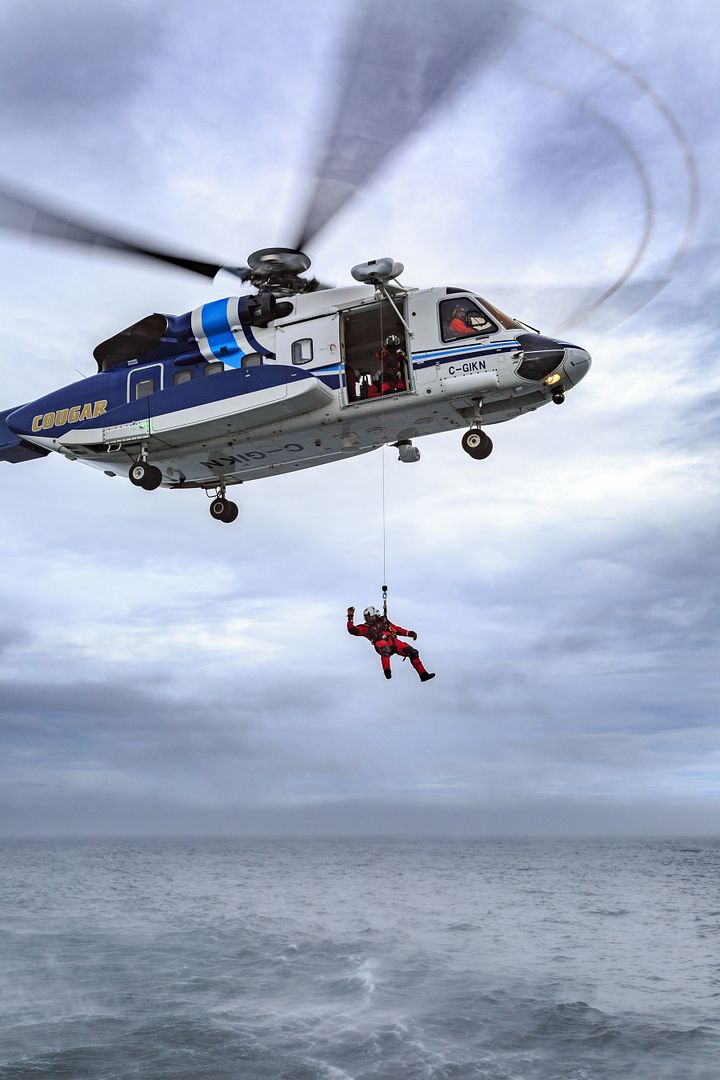
December 28, 2017 ? Ottawa ? National Defence / Canadian Armed Forces
Canada?s Air Task Force (ATF) in Romania will complete its four-month mission in support of Operation REASSURANCE and Block 45 of NATO enhanced Air Policing (eAP) on December 31, 2017.
Throughout the mission, ATF-Romania successfully built on the already strong, established relationships with Romania and other NATO Allies. ATF-Romania demonstrated Canada?s commitment to the NATO Readiness Action Plan, reassured Canada?s allies, and helped to support regional stability.
In addition to the eAP mission, the Air Task Force conducted regular training with its Romanian hosts. This training included medical support, flight safety, aircraft maintenance, command and control, and military policing. ATF-Romania also conducted several activities in support of local communities, including delivering donations to an orphanage.
ATF- Romania?s CF-18 Hornet crews trained alongside Romanian Air Force MiG-21s, F-16s and Puma helicopters?in addition to Portuguese F-16s, US Army Blackhawk helicopters and NATO airborne warning and control systems (AWACs). The CF-18 crews also trained with French and Romanian vessels in the Black Sea.
France's first Lockheed Martin C-130J was delivered to its Orl?ans air base on 22 December 2017.
Carrying the service registration 61-PO, the tactical transport is the first of four C-130Js being acquired by Paris. Its second airlifter will be received later this year, while a pair of KC-130J tanker/transports ? needed to refuel combat helicopters in-flight ? are to follow during 2019.
The first delivery followed the approval of type certification for the new-generation Hercules by France's DGA defence procurement agency, under a procurement approved in January 2016.
Meanwhile, France's SIA? support body has awarded Marshall Aerospace and Defence Group a contract to provide engineering services for the French air force's 14-strong fleet of C-130H transports.
The UK company says the deal will "ensure the delivery of support to the French air force C-130H aircraft to enable improved availability". Its contract ? the value of which has not been disclosed ? will cover a transition period, "followed by four years of full service delivery, with two additional option periods", it adds.
Flight Fleets Analyzer shows France's legacy Hercules as being aged between 26 and 42 years.
-
 Main AdminARABIAN GULF (Jan. 2, 2018) Sailors guide an F/A-18F Super Hornet, assigned to the Fighting Redcocks of Strike Fighter Attack Squadron (VFA) 22 during a preflight inspection on the flight deck of the aircraft carrier USS Theodore Roosevelt (CVN 71). Theodore Roosevelt and its carrier strike group are deployed to the U.S. 5th Fleet area of operations in support of maritime security operations to reassure allies and partners and preserve the freedom of navigation and the free flow of commerce in the region. (U.S. Navy photo by Mass Communication Specialist 3rd Victoria Foley/Released)
Main AdminARABIAN GULF (Jan. 2, 2018) Sailors guide an F/A-18F Super Hornet, assigned to the Fighting Redcocks of Strike Fighter Attack Squadron (VFA) 22 during a preflight inspection on the flight deck of the aircraft carrier USS Theodore Roosevelt (CVN 71). Theodore Roosevelt and its carrier strike group are deployed to the U.S. 5th Fleet area of operations in support of maritime security operations to reassure allies and partners and preserve the freedom of navigation and the free flow of commerce in the region. (U.S. Navy photo by Mass Communication Specialist 3rd Victoria Foley/Released)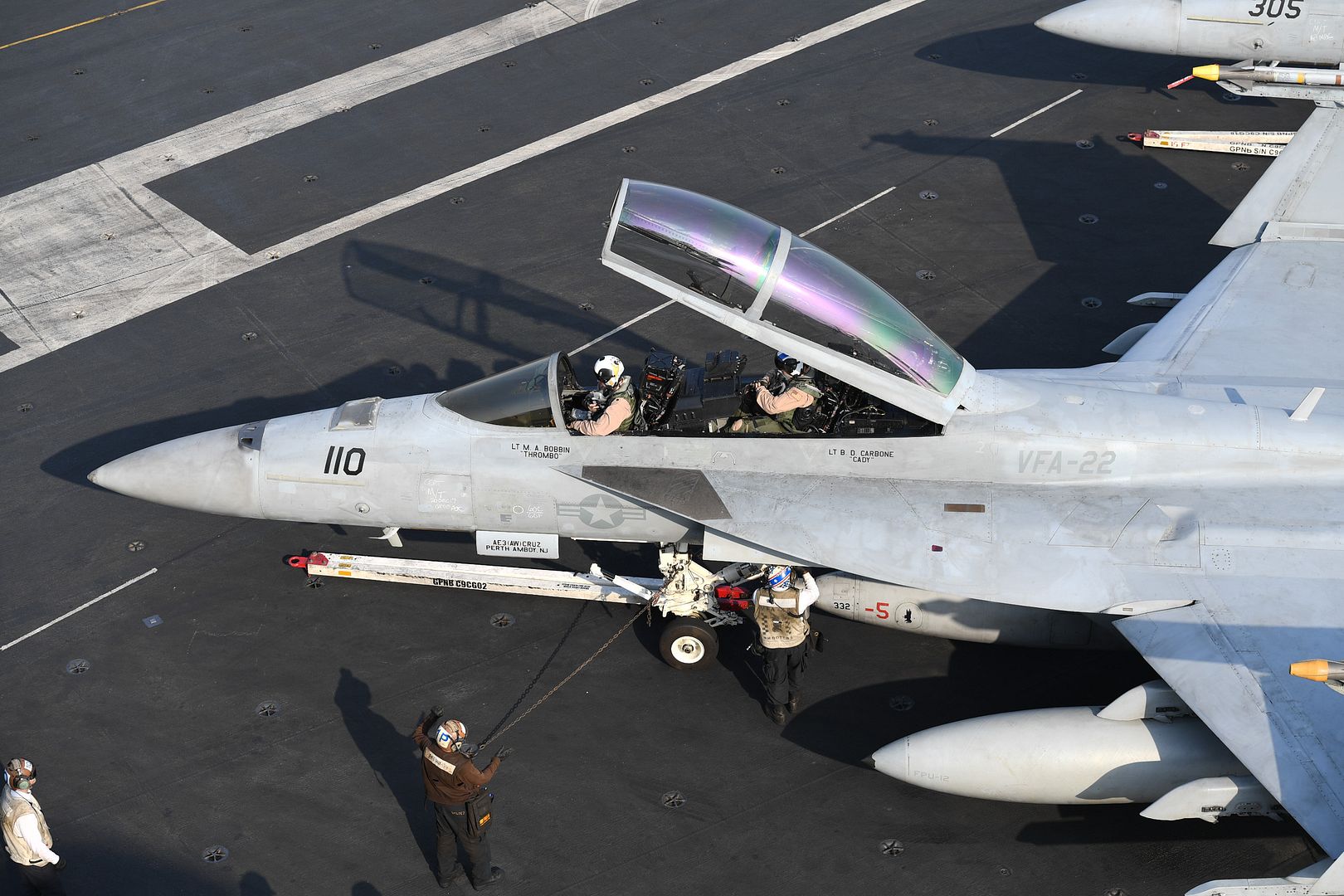
CELEBES SEA (Jan. 2, 2018) Aviation Boatswain's Mate (Handling) 3rd Class Paul Clarke, assigned to the amphibious assault ship USS America (LHA 6), signals an AV-8B Harrier assigned to Marine Medium Tiltrotor Squadron (VMM) 161 (Reinforced) to lift off from the flight deck. America, part of the America Amphibious Ready Group, with embarked 15th Marine Expeditionary Unit, is operating in the Indo-Asia Pacific region to strengthen partnerships and serve as a ready-response force for any type of contingency. (U.S. Navy photo by Mass Communication Specialist 3rd Class Vance Hand/Released)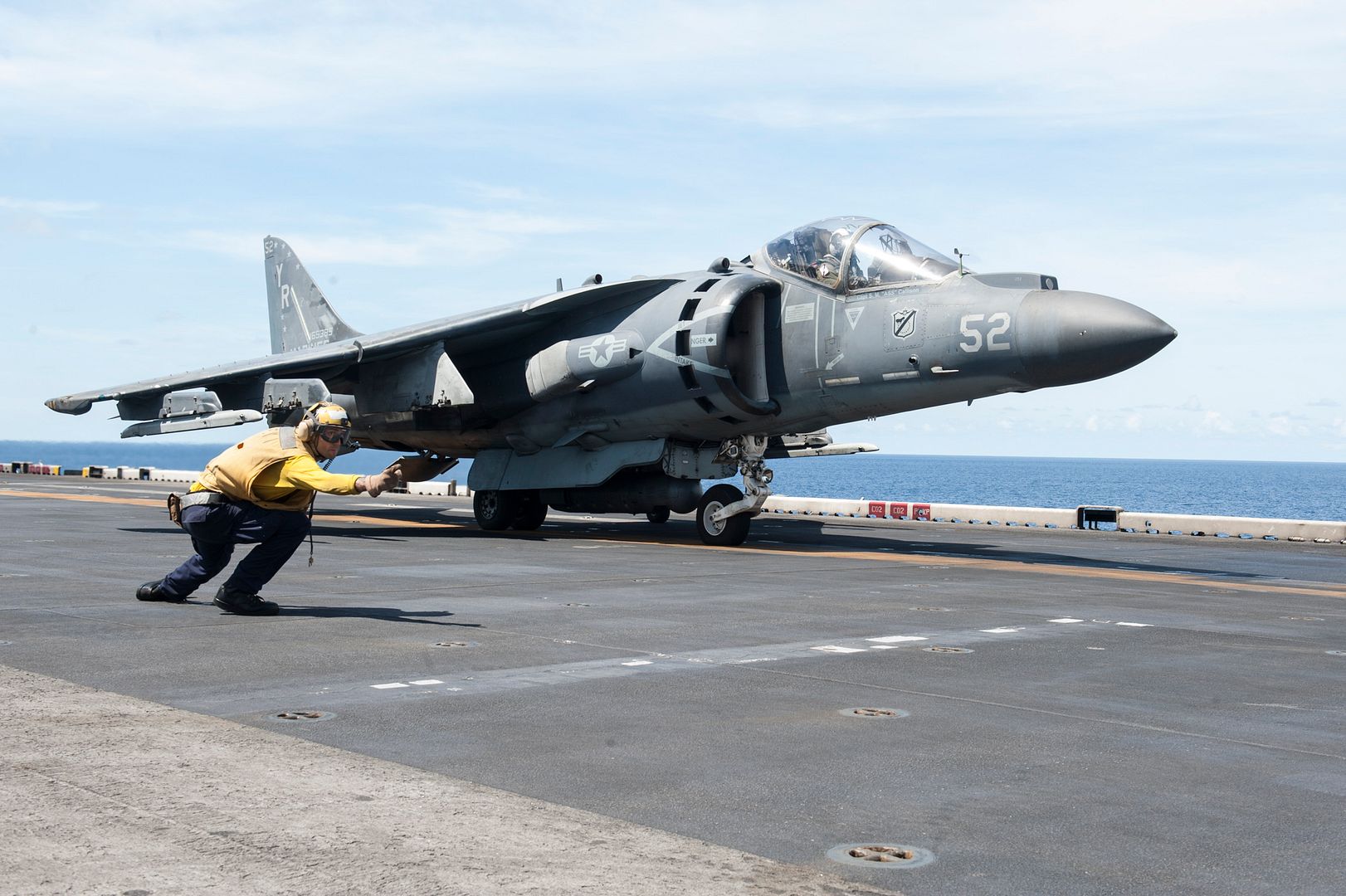
-
 Main AdminS?o Jos? dos Campos, Brazil, January 4, 2018 ? Embraer and Wider?e, the largest regional airline in Scandinavia and launch customer for the E190-E2, have reached an agreement on a Flight Hour Pool Program for the airline?s soon to be inducted E2 fleet. This is the first contract of its kind signed for the E-Jets E2, Embraer?s second generation of the E-Jets family of commercial aircraft. The agreement will cover more than 300 key rotable components, for the airline?s E190-E2 fleet. Wider?e will receive its first E190-E2 in April of 2018, beginning revenue service with the aircraft shortly afterwards. ?This contract reminds me of the first Pool we signed for the E-Jets current generation, 14 years ago. It was for just one aircraft and proved to be the first of many others,? said Johann Bordais, President & CEO, Embraer Service & Support. ?Wider?e is once again showing their confidence in Embraer, its products and level of support; something that embeds our responsibility and commitment with the airline even deeper.? Wider?e?s contract with Embraer is for up to 15 E2 jets consisting of three firm orders for the E190-E2 and purchase rights for 12 further E2s. The order has a potential list price value of up to USD 873 million, with all orders being exercised. The airline is configuring the E190-E2s in a comfortable single-class layout with 114 seats. ?Embraer started to support us the very day we signed the contract, and that support has continued to develop, in partnership with our team, to ensure the smoothest possible entry in service for this fine aircraft that will revolutionize our offering to our customers,? said Stein Nilsen, Chief Executive Officer of Wider?e. ?Our peers, other airlines and operators, enthusiastically endorse the Embraer Pool Program and this was fundamental in our decision to join the program; it?s the smart choice.?
Main AdminS?o Jos? dos Campos, Brazil, January 4, 2018 ? Embraer and Wider?e, the largest regional airline in Scandinavia and launch customer for the E190-E2, have reached an agreement on a Flight Hour Pool Program for the airline?s soon to be inducted E2 fleet. This is the first contract of its kind signed for the E-Jets E2, Embraer?s second generation of the E-Jets family of commercial aircraft. The agreement will cover more than 300 key rotable components, for the airline?s E190-E2 fleet. Wider?e will receive its first E190-E2 in April of 2018, beginning revenue service with the aircraft shortly afterwards. ?This contract reminds me of the first Pool we signed for the E-Jets current generation, 14 years ago. It was for just one aircraft and proved to be the first of many others,? said Johann Bordais, President & CEO, Embraer Service & Support. ?Wider?e is once again showing their confidence in Embraer, its products and level of support; something that embeds our responsibility and commitment with the airline even deeper.? Wider?e?s contract with Embraer is for up to 15 E2 jets consisting of three firm orders for the E190-E2 and purchase rights for 12 further E2s. The order has a potential list price value of up to USD 873 million, with all orders being exercised. The airline is configuring the E190-E2s in a comfortable single-class layout with 114 seats. ?Embraer started to support us the very day we signed the contract, and that support has continued to develop, in partnership with our team, to ensure the smoothest possible entry in service for this fine aircraft that will revolutionize our offering to our customers,? said Stein Nilsen, Chief Executive Officer of Wider?e. ?Our peers, other airlines and operators, enthusiastically endorse the Embraer Pool Program and this was fundamental in our decision to join the program; it?s the smart choice.?
Embraer?s Flight Hour Pool Program, which currently supports more than 40 airlines worldwide, is designed to allow airlines to minimize their upfront investment on expensive repairable inventories and resources and to take advantage of Embraer?s technical expertise and its vast component repair service provider network. The results are significant savings on repair and inventory carrying costs, reduction in required warehousing space, and the elimination of resources required for repair management, while ultimately providing guaranteed performance levels. Embraer is the world?s leading manufacturer of commercial jets with up to 150 seats. The Company has 100 customers from all over the world operating the ERJ and the E-Jet families of aircraft. For the E-Jets program alone, Embraer has logged more than 1,800 orders and 1,400 deliveries, redefining the traditional concept of regional aircraft by operating across a range of business applications.
About Wider?e. Wider?e is the largest regional airline in Scandinavia, with a staff of 3,000 and a turnover of NOK 4.4 billion. The company carries close to 3 million passengers annually and flies to 46 domestic and international destinations. Wider?e operates more than 450 flights every day and operates to more than twice as many airports in Norway than any other airline. Today our network consists of 60% commercial routes, and 40% PSO routes (Public Services Obligations).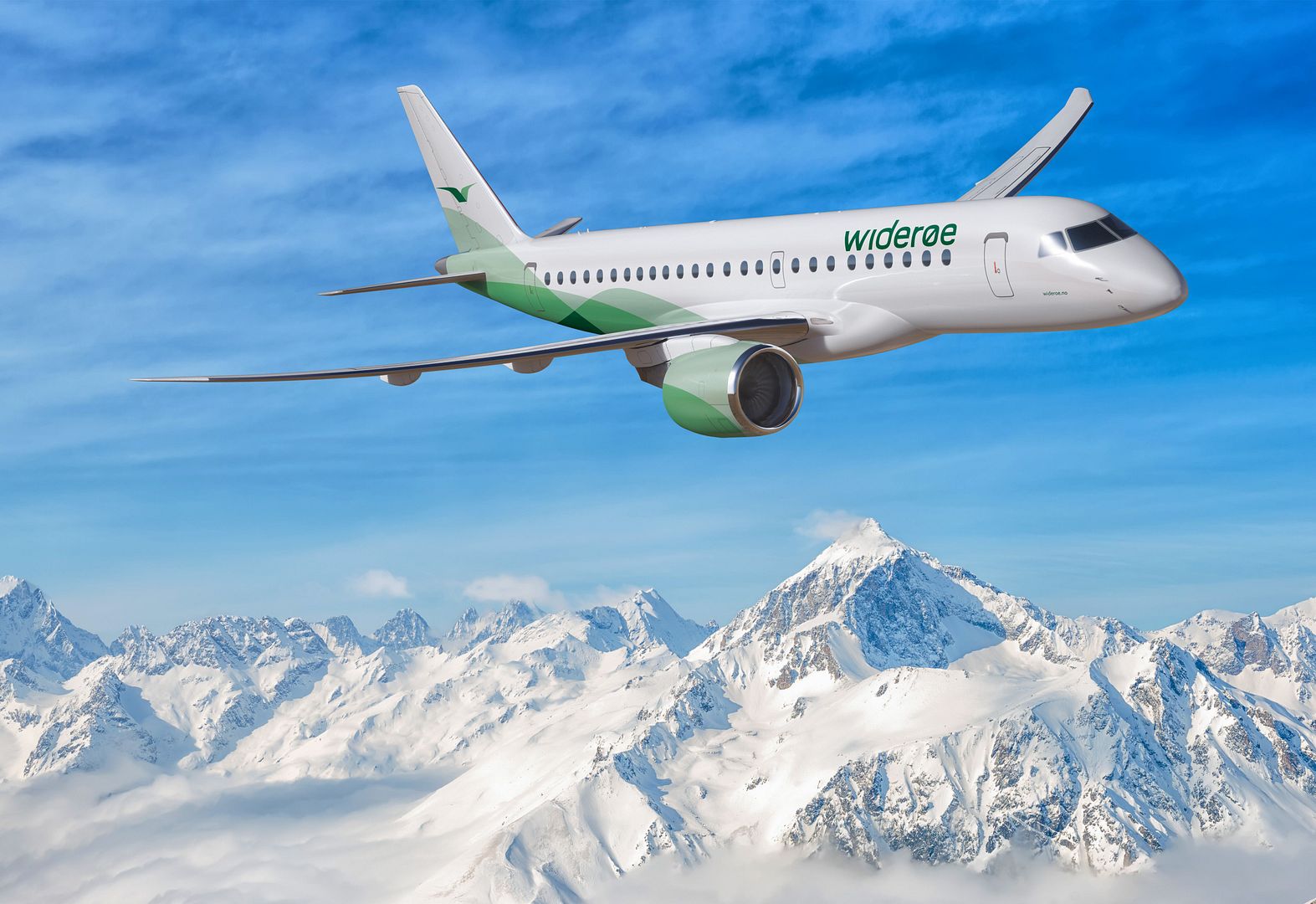
-
 Main AdminAirbus has completed assembly of the first A321neo ACF (Airbus Cabin Flex) at its facilities in Hamburg, Germany. The aircraft, powered by CFM LEAP-1A engines, will undergo ground tests prior to its scheduled first flight in the coming weeks. First delivery of an A321neo ACF to a customer is scheduled for mid-2018.
Main AdminAirbus has completed assembly of the first A321neo ACF (Airbus Cabin Flex) at its facilities in Hamburg, Germany. The aircraft, powered by CFM LEAP-1A engines, will undergo ground tests prior to its scheduled first flight in the coming weeks. First delivery of an A321neo ACF to a customer is scheduled for mid-2018.
The A321neo ACF is the latest addition to the successful A320 Family. By applying modifications to the fuselage, the ACF enables more flexible cabin configurations for up to 240 passengers. Compared to the previous A321 variant, the most visible modifications are a new rear section and a modified passenger door configuration, where the door located forward of the wing is removed and new overwing emergency exits in the centre section are introduced. The A321neo ACF is an option today and will become standard for all A321neos around 2020.
The A321neo ACF is the base for a longer range variant known as the A321LR. The A321LR has an increased MTOW (Maximum Take Off Weight) of 97 tonnes and a third underfloor fuel tank allowing airlines to increase its range to 4,000 nautical miles for intercontinental flights. The first delivery of an A321LR is targeted for the fourth quarter of 2018.
The A321 is the largest member of the A320 Family, seating up to 240 passengers, depending on cabin configuration. Incorporating the latest engines, aerodynamic advances and cabin innovations, the A321neo offers a reduction in fuel consumption of at least 15 percent per seat from day one and 20 percent by 2020.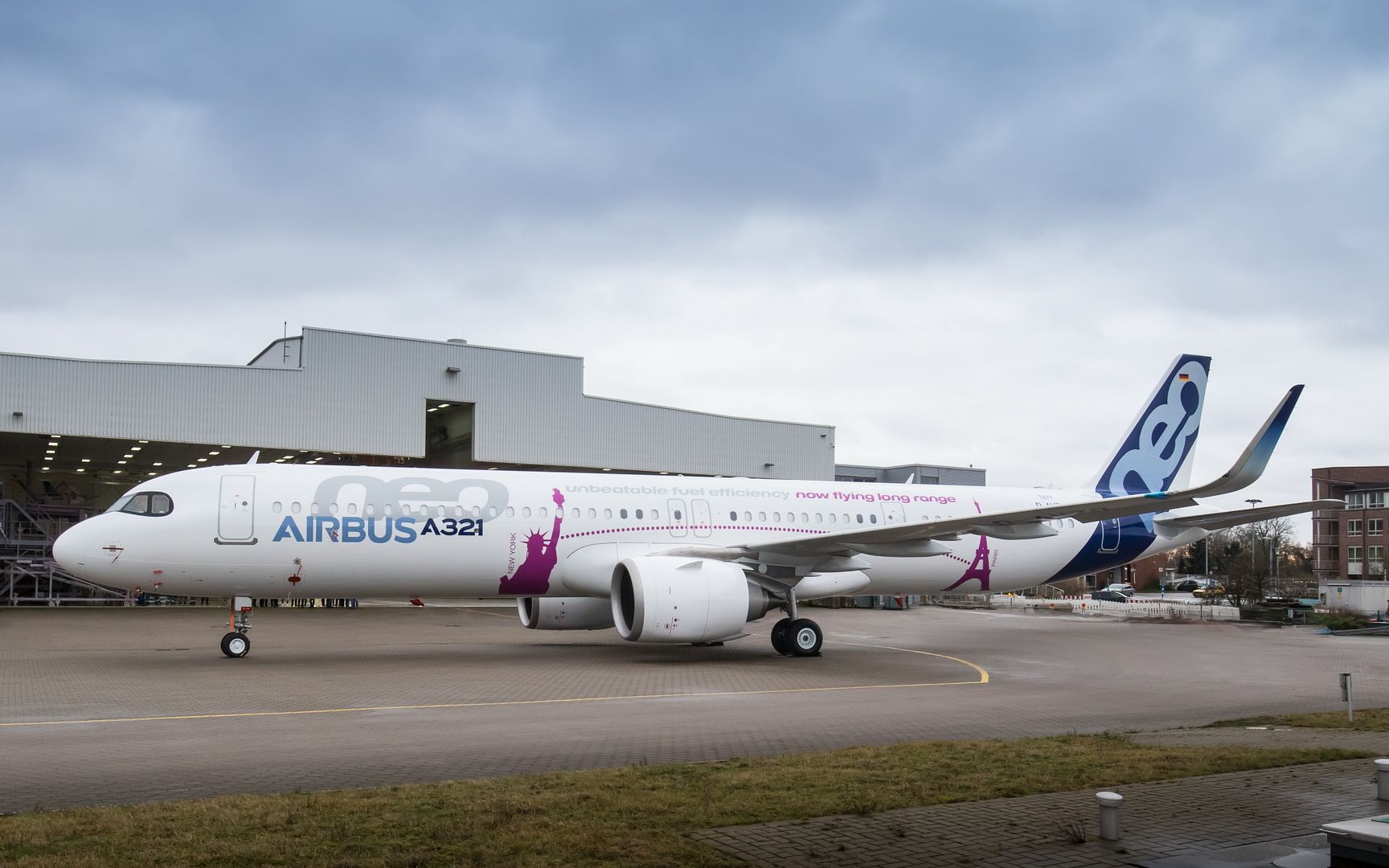
In his first visit to Iraq, Defence Secretary Gavin Williamson praised UK service personnel as British airstrikes continue to wipe out Daesh.
RAF aircraft flew on operations against the terrorist group every day over the Christmas period, striking terrorist compounds, trucks, mortars and pockets of fighters engaged in close quarter, street fighting with Syrian Democratic Forces (SDF).
Defence Secretary Gavin Williamson said:
The dangers we face are changing and are intensifying rapidly. Eliminating the threat from terrorism is critical to our security at home and abroad. Our brave Armed Forces are working tirelessly, day and night, to defeat Daesh after helping to recover significant territory in Iraq.
Only by defeating this evil and barbaric group for good will we reduce the deadly threat they pose to us, which is why we won?t stop until their global network is destroyed.
RAF aircraft have carried out over 1,700 strikes against Daesh in Iraq and Syria since 2014 and in his first visit to Cyprus, Defence Secretary Gavin Williamson also met the crews who are playing a vital role in the coalition campaign to totally defeat Daesh.
Fast jets flying out of RAF Akrotiri in Cyprus and remotely piloted Reaper aircraft continue to provide support to the SDF on the ground who are clearing the last remaining pockets of Daesh terrorists in Eastern Syria.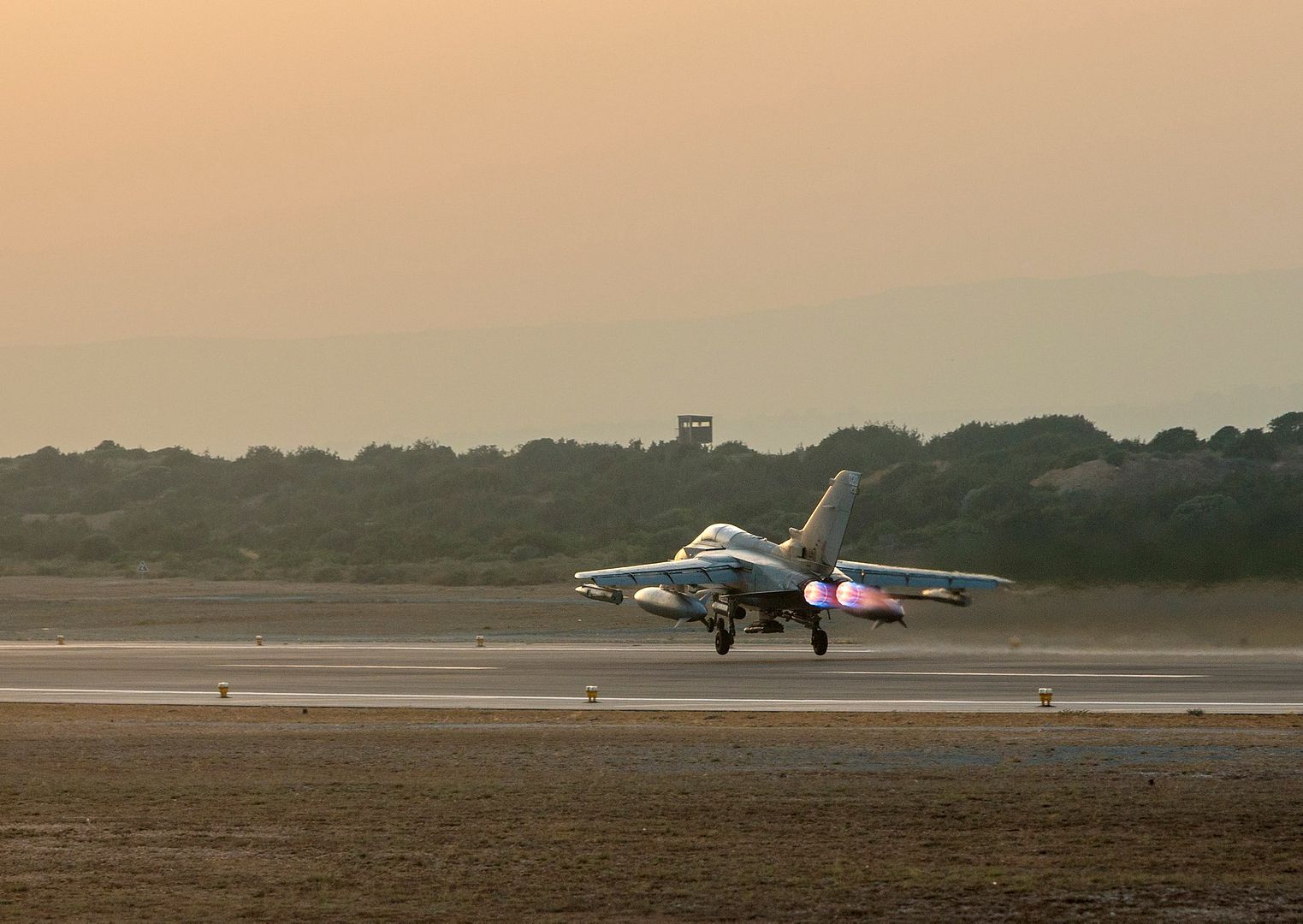
Typhoons, Tornados and Reapers worked closely with coalition partners, offering vital intelligence and close air support throughout December, destroying Daesh targets near Abu Kamal, Abu Hardub and Abu Hammam.
He also visited UK personnel in Taji and Baghdad, as well as Kuwait, praising their efforts as part of the UK?s contribution to the global coalition fight Daesh.
In Kuwait, he met with US Lieutenant General Paul Funk the Commanding General of the global coalition as well as Major General Felix Gedney, Deputy Commander-Strategy and Support and the most senior UK officer in the military campaign against Daesh.
They discussed the success of the military campaign in both Iraq and Syria, but also reflected that Daesh have not yet been defeated as pockets of fighters still remain and will continue to pose a threat at home and abroad.
In Baghdad, Mr Williamson met with the Iraqi Defence Minister and visited the Iraqi National Security Agency, commending the efforts of the Iraqi Security Forces and reiterating the UK?s commitment to the long-term security and stability of Iraq. This follows from the Prime Minister?s pledge in her recent visit to address the evolving threat from Daesh and countering the dispersal of foreign fighters as Daesh is squeezed out of the battlefield in Syria and Iraq
He also visited UK troops stationed in Taji who, along with over 600 British soldiers on the ground in Iraq, are helping to train that country?s forces. UK troops have so far helped train around 60,000 Iraqi Security Forces in battle-winning infantry, counter-IED, engineering and combat medical skills. In addition to personnel on the ground in Iraq, the UK has provided over 1,400 military personnel from all three Services as part of its three year involvement.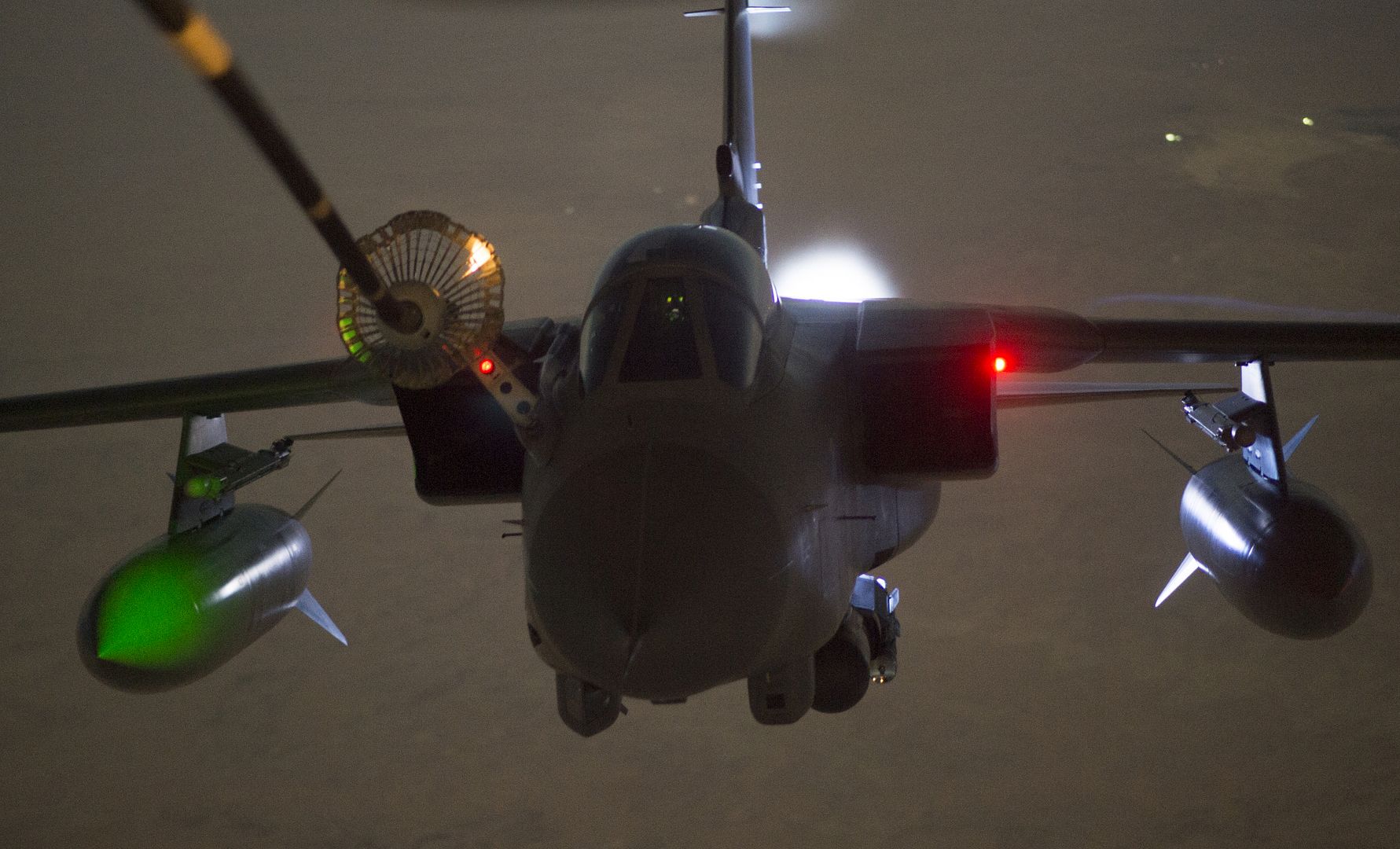
Post a reply
- Go to Previous topic
- Go to Next topic
- Go to Welcome
- Go to Introduce Yourself
- Go to General Discussion
- Go to Screenshots, Images and Videos
- Go to Off topic
- Go to Works in Progress
- Go to Skinning Tips / Tutorials
- Go to Skin Requests
- Go to IJAAF Library
- Go to Luftwaffe Library
- Go to RAF Library
- Go to USAAF / USN Library
- Go to Misc Library
- Go to The Ops Room
- Go to Made in Germany
- Go to Campaigns and Missions
- Go to Works in Progress
- Go to Juri's Air-Raid Shelter
- Go to Campaigns and Missions
- Go to Works in Progress
- Go to Skinpacks
- Go to External Projects Discussion
- Go to Books & Resources
